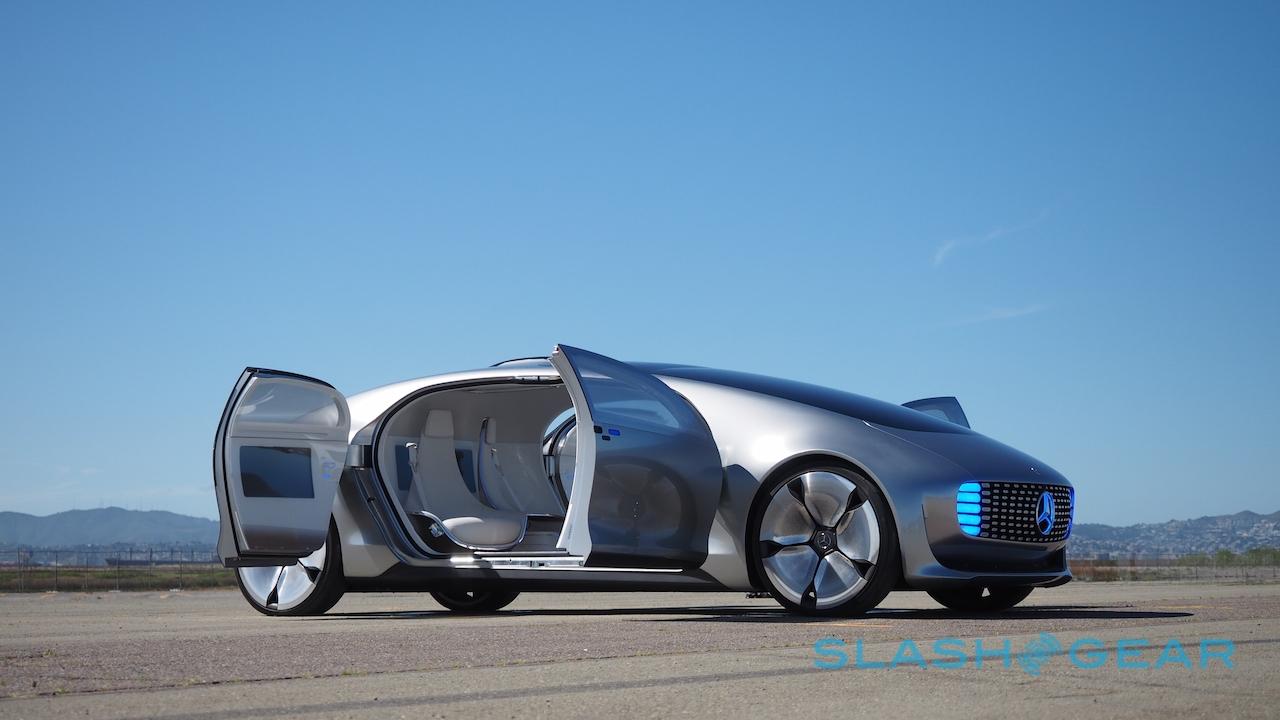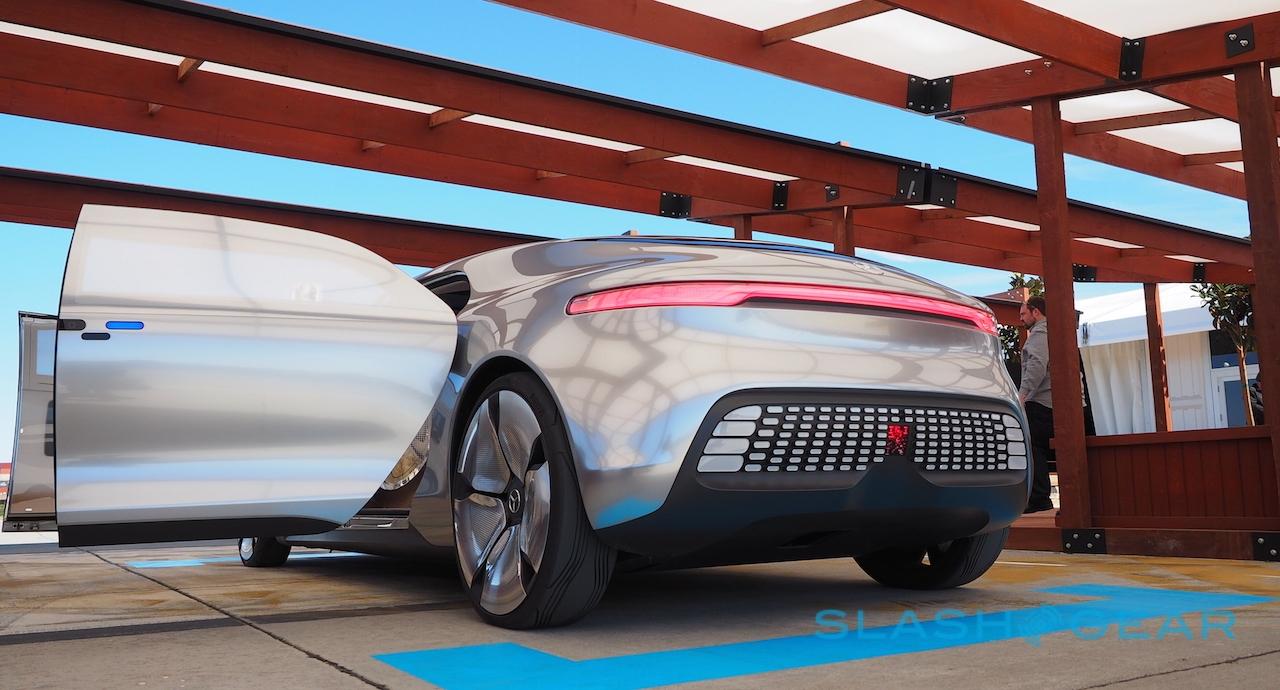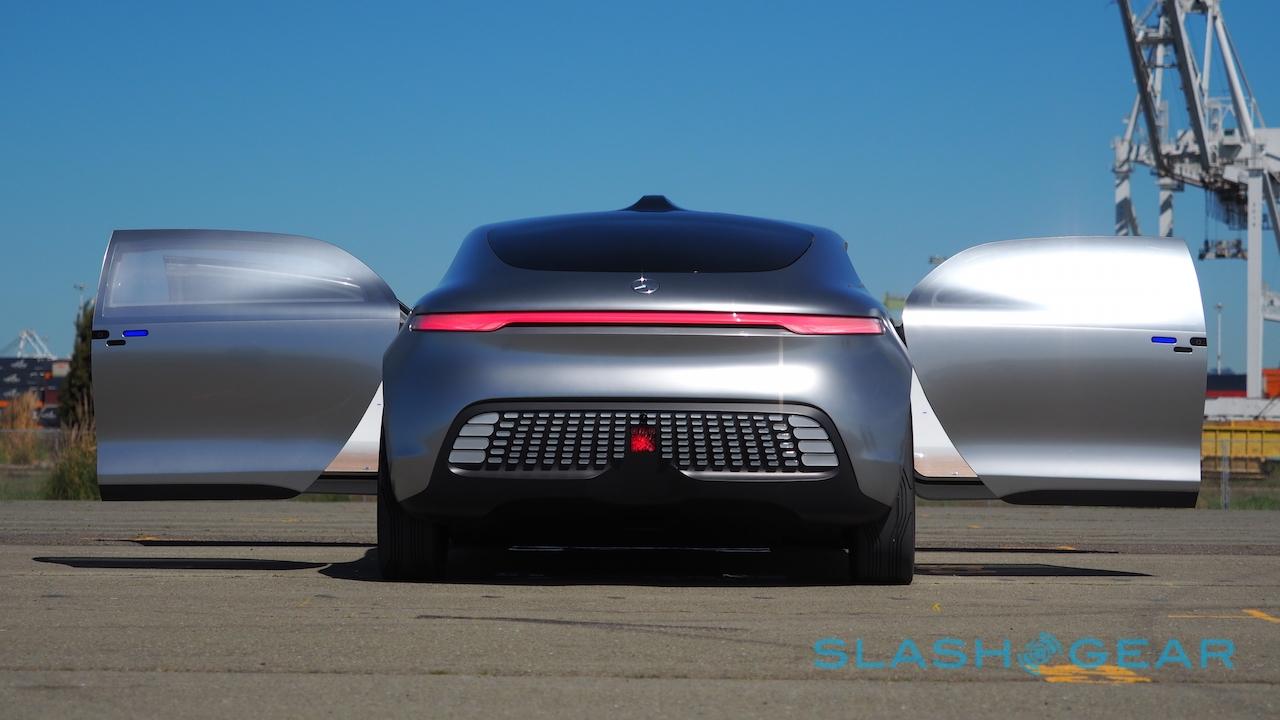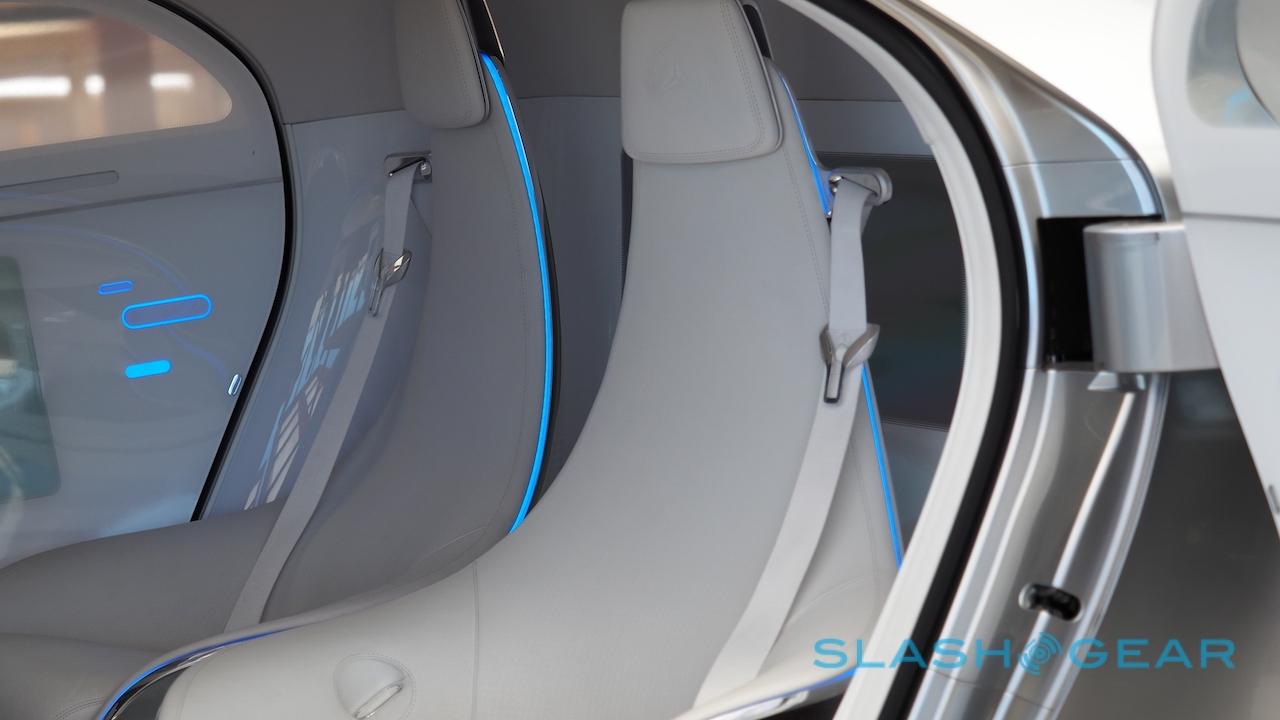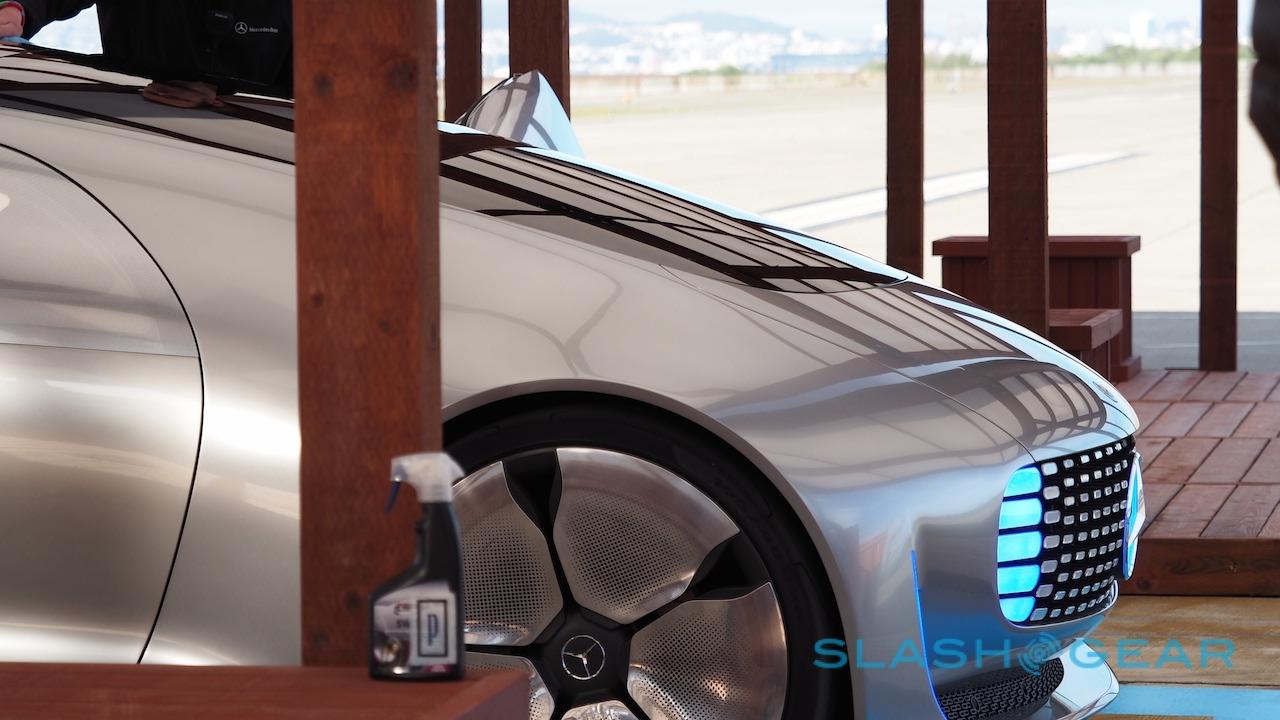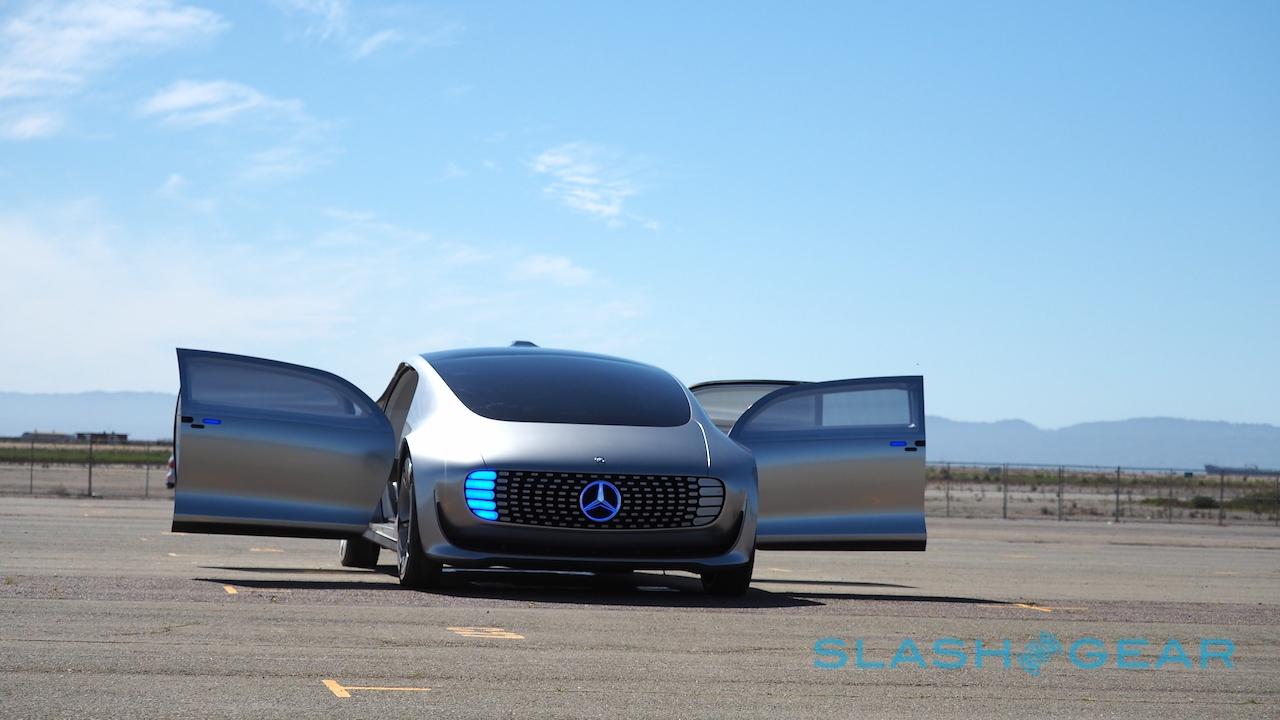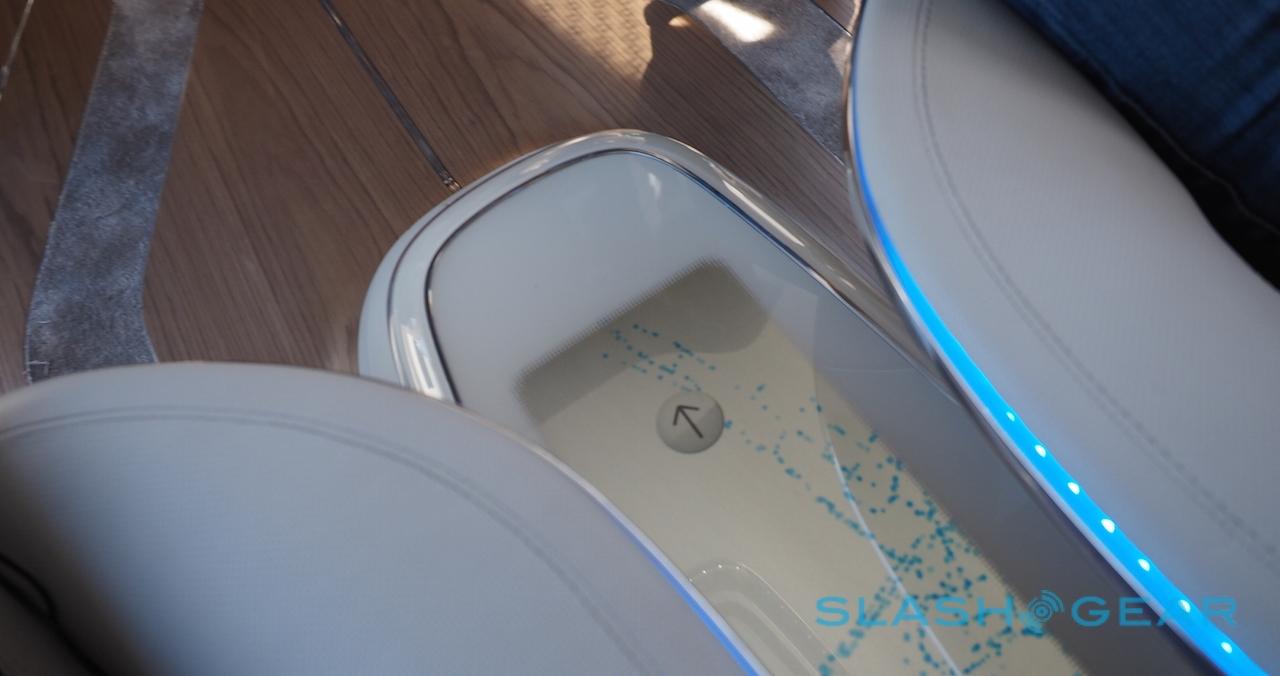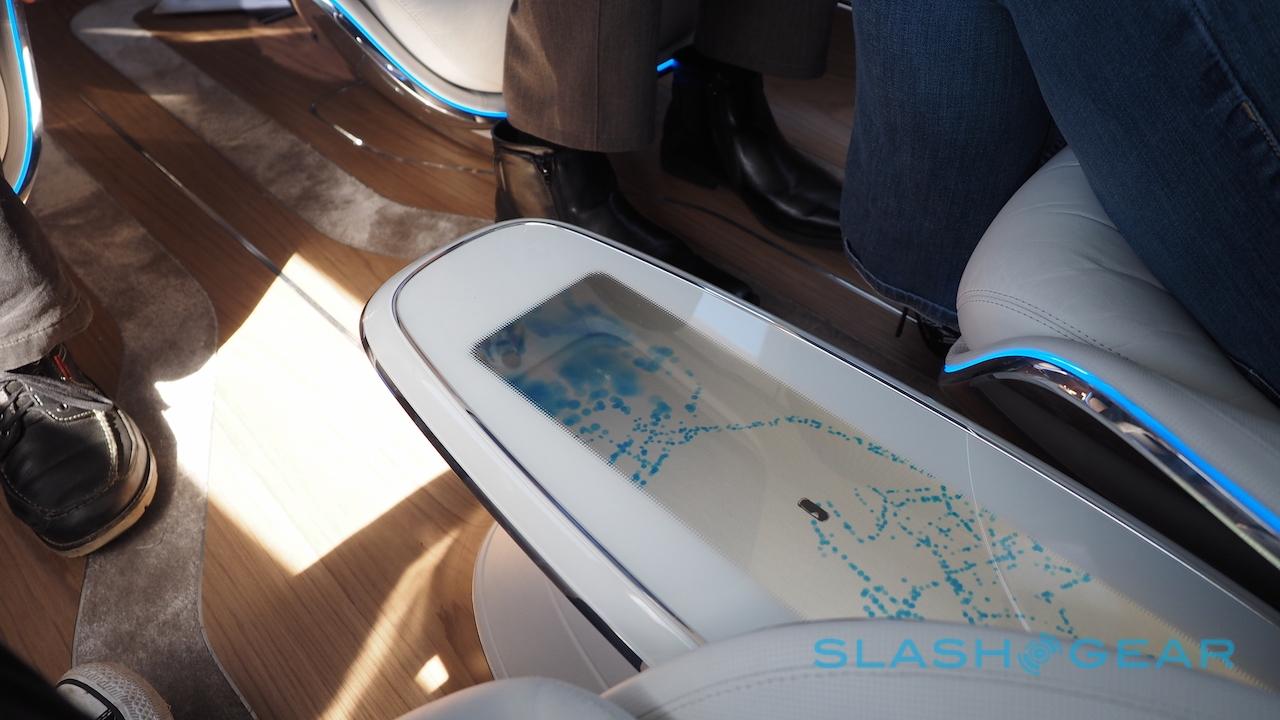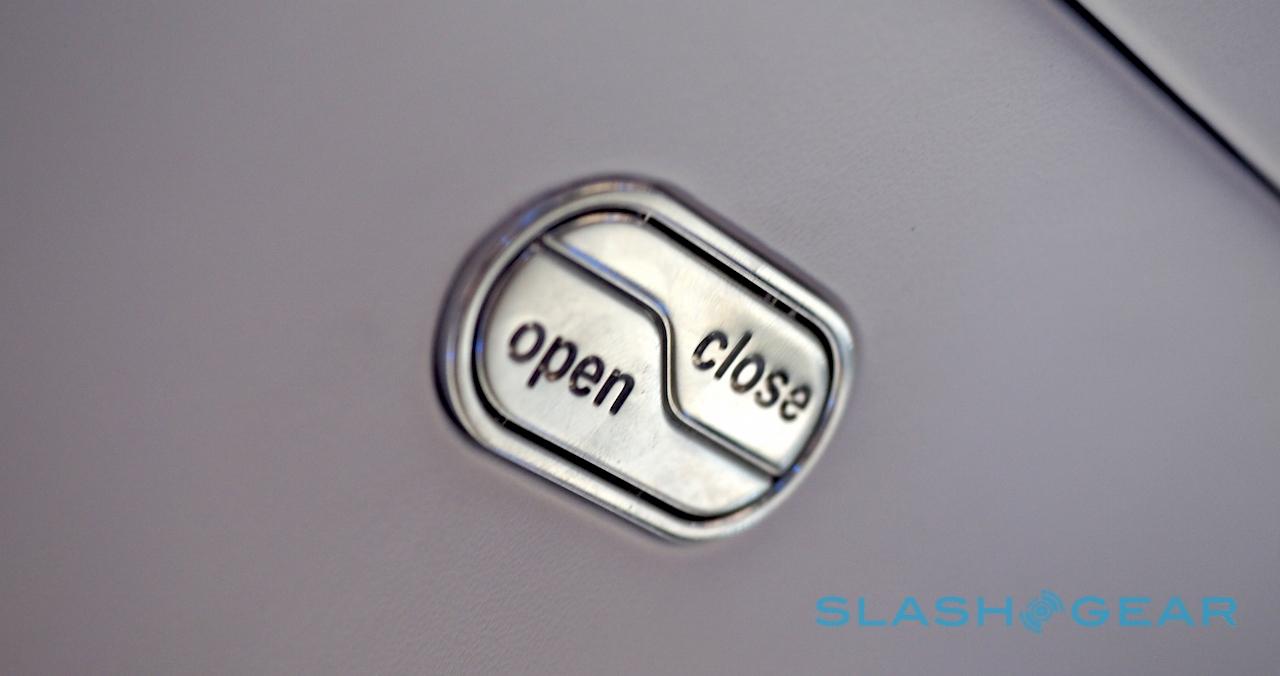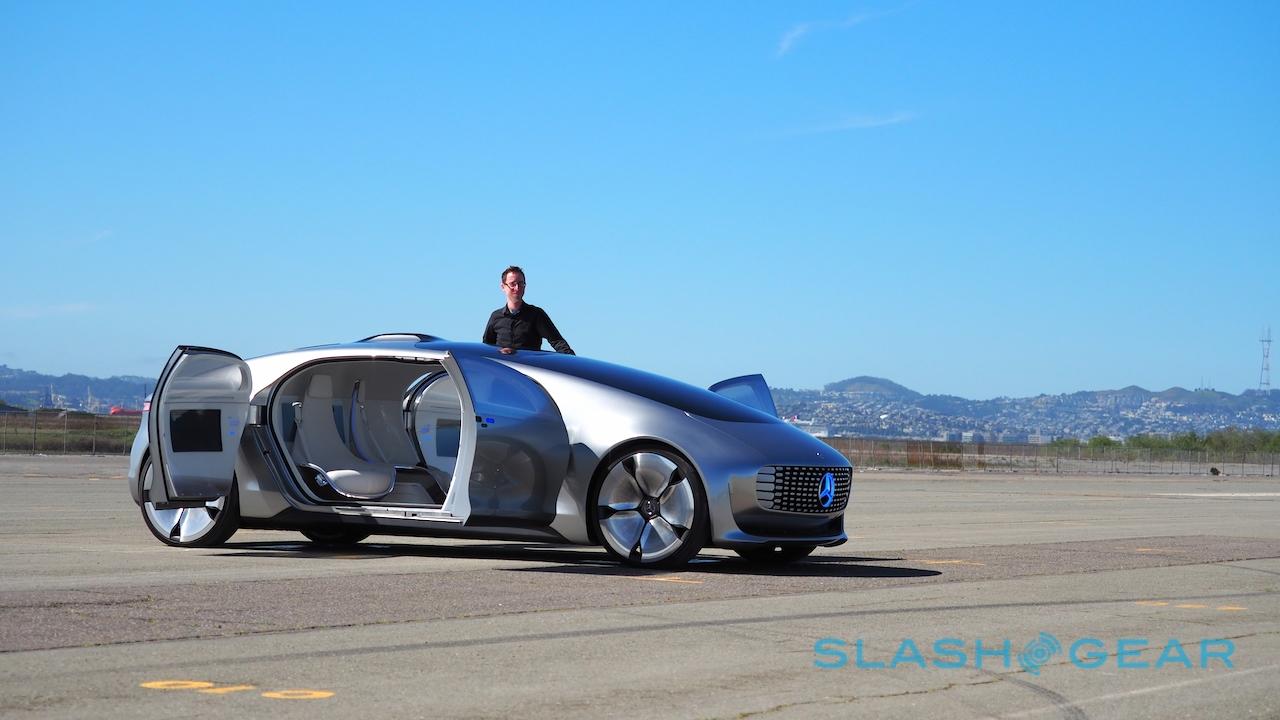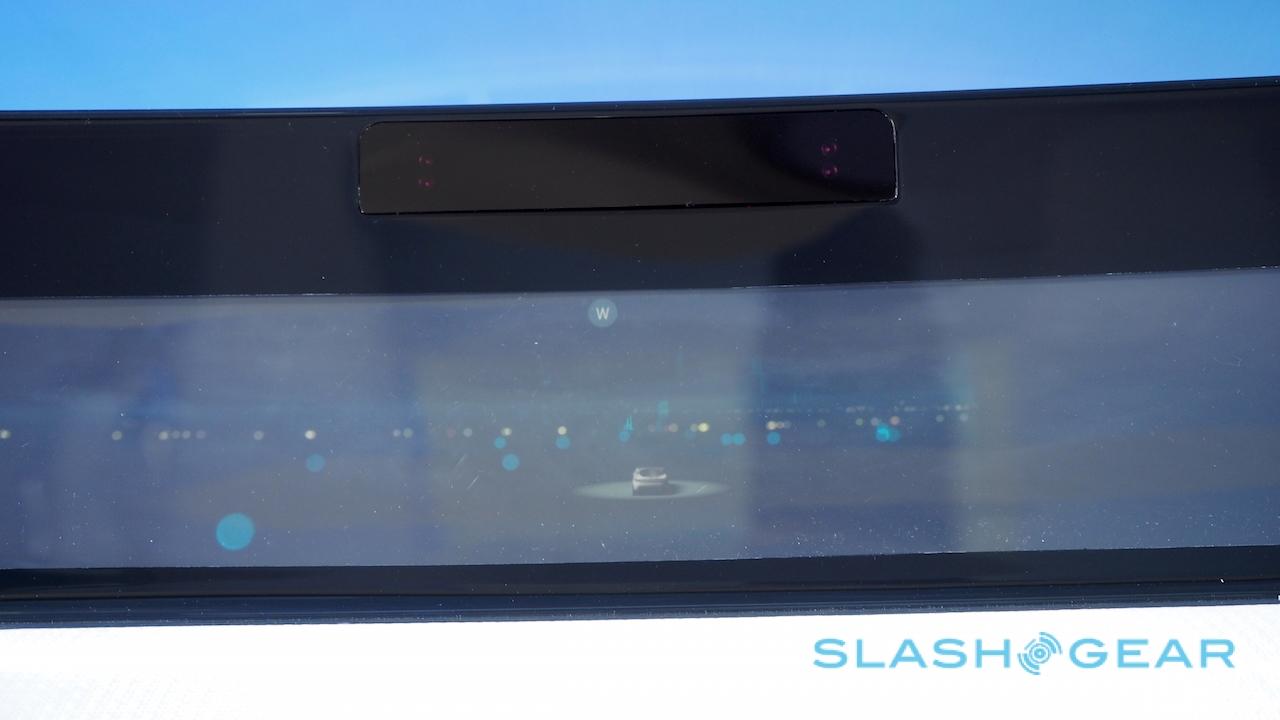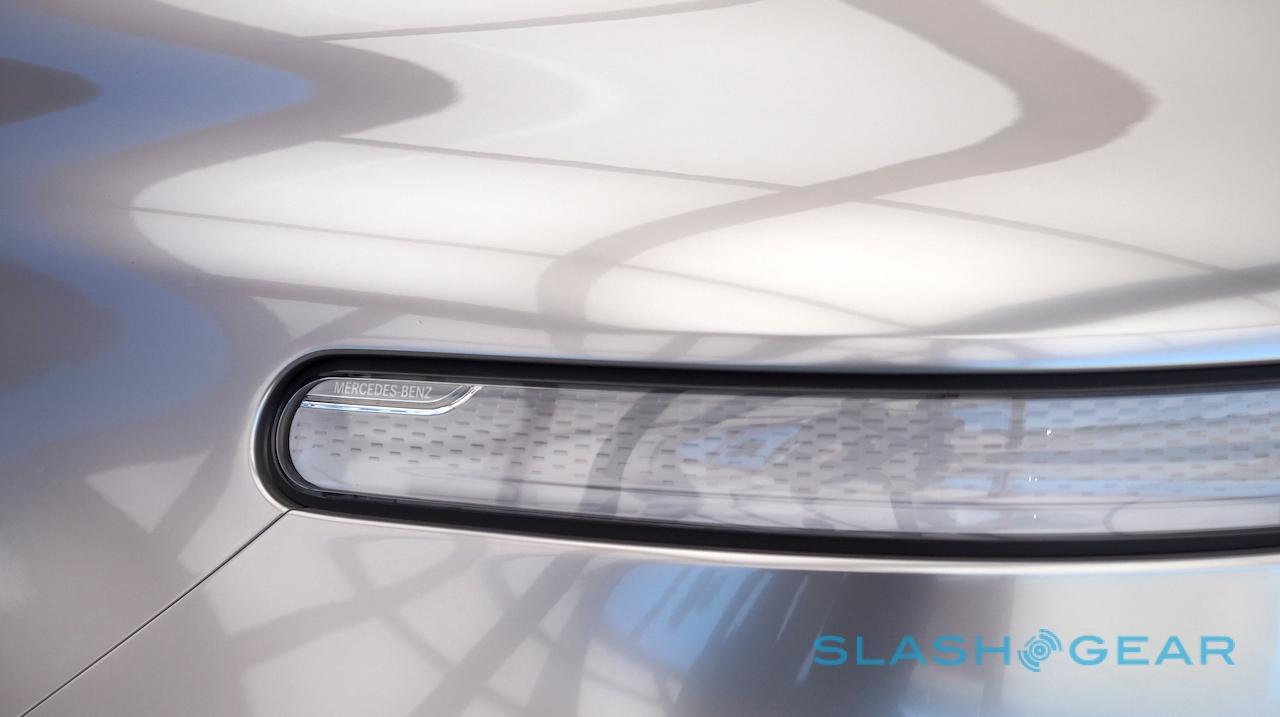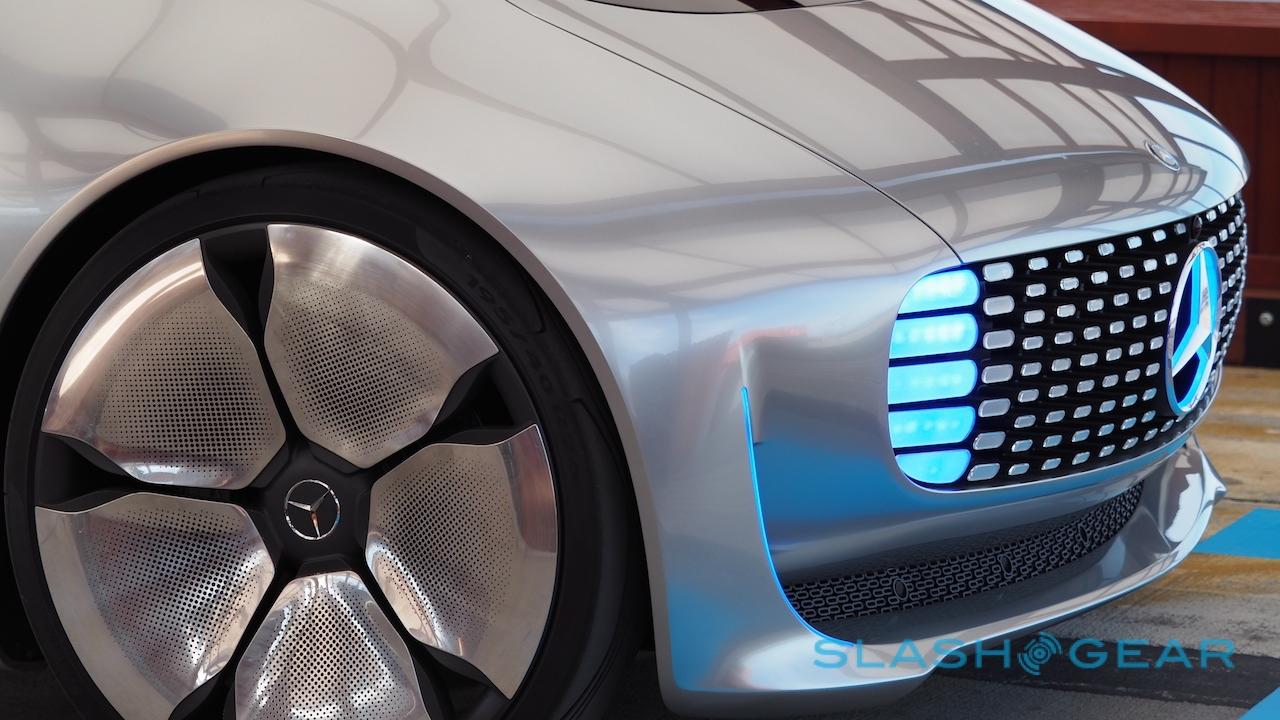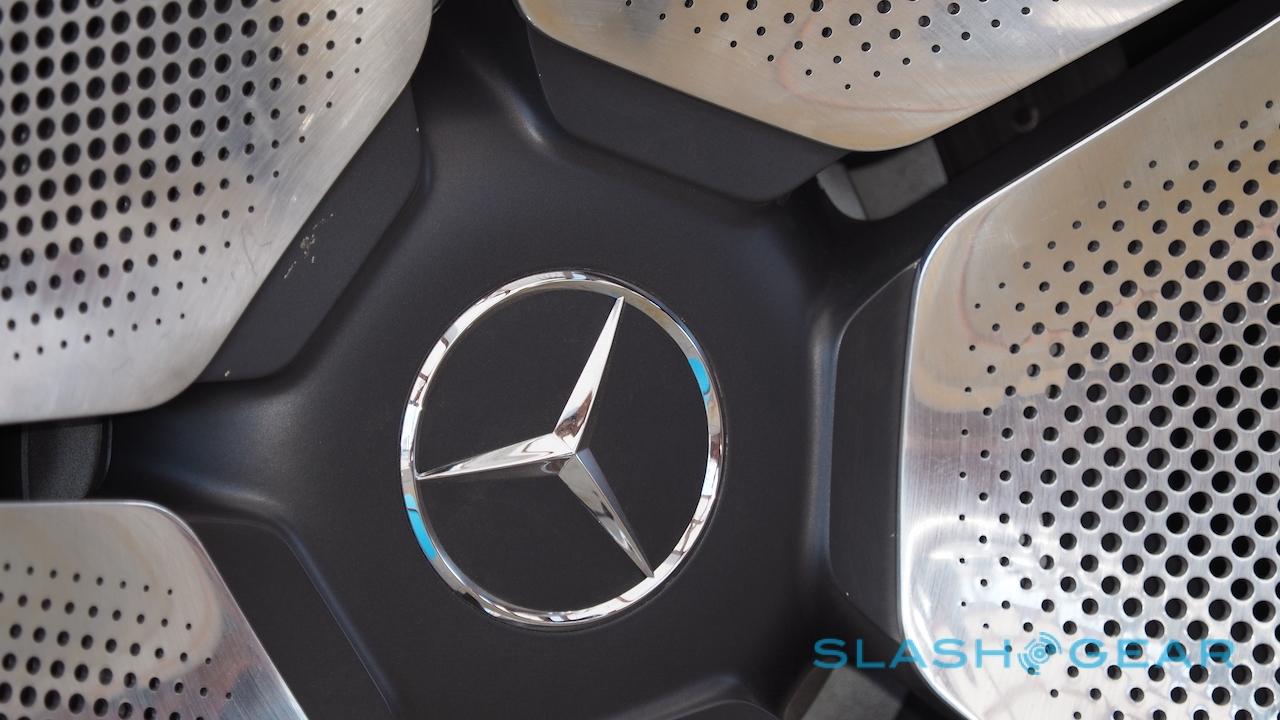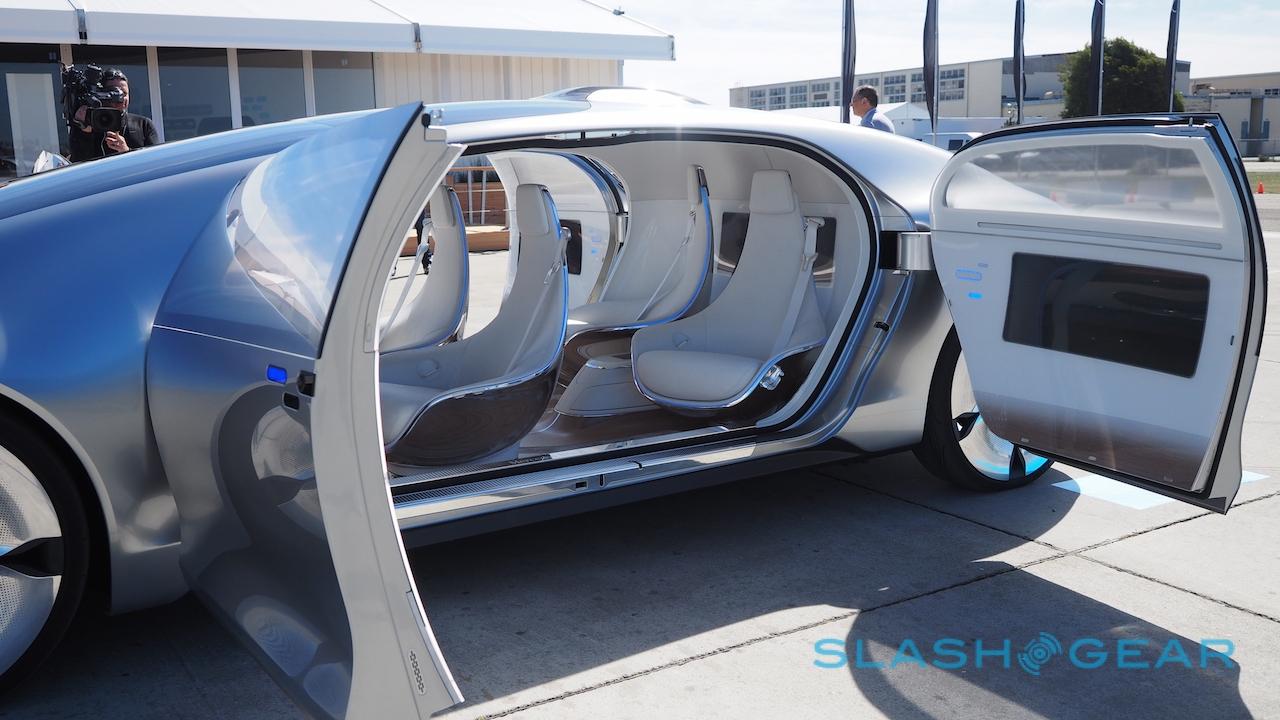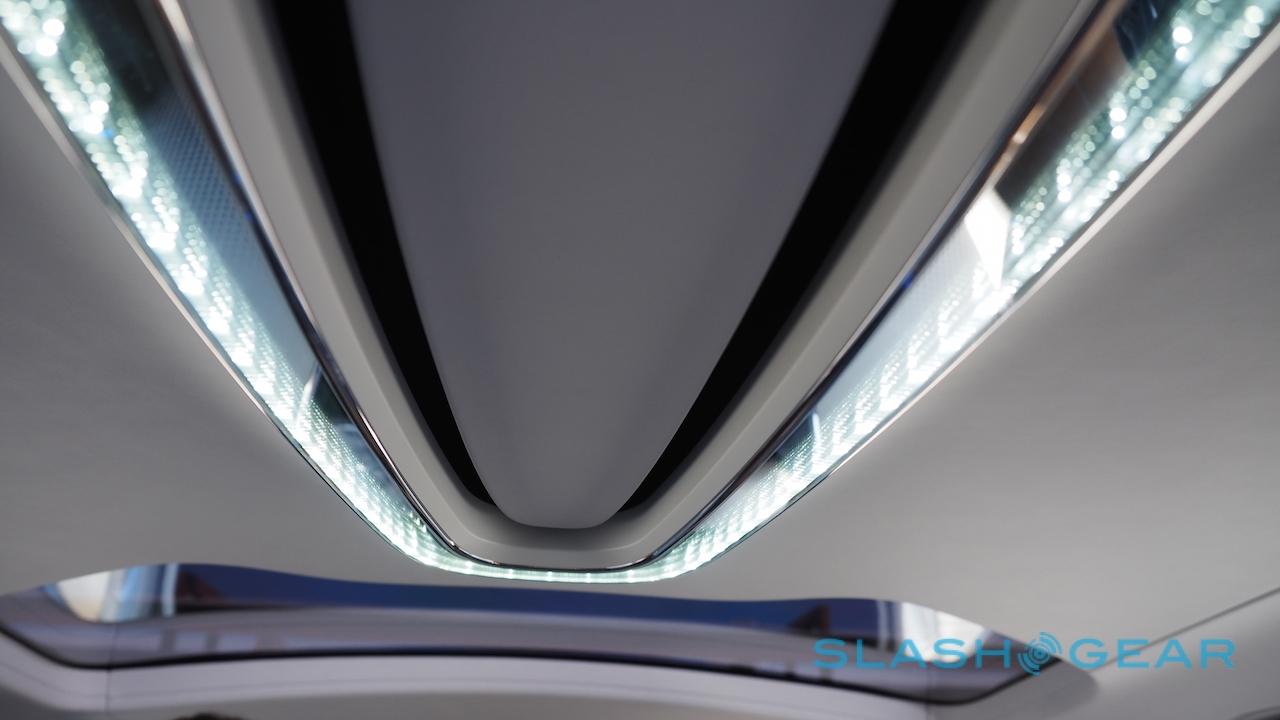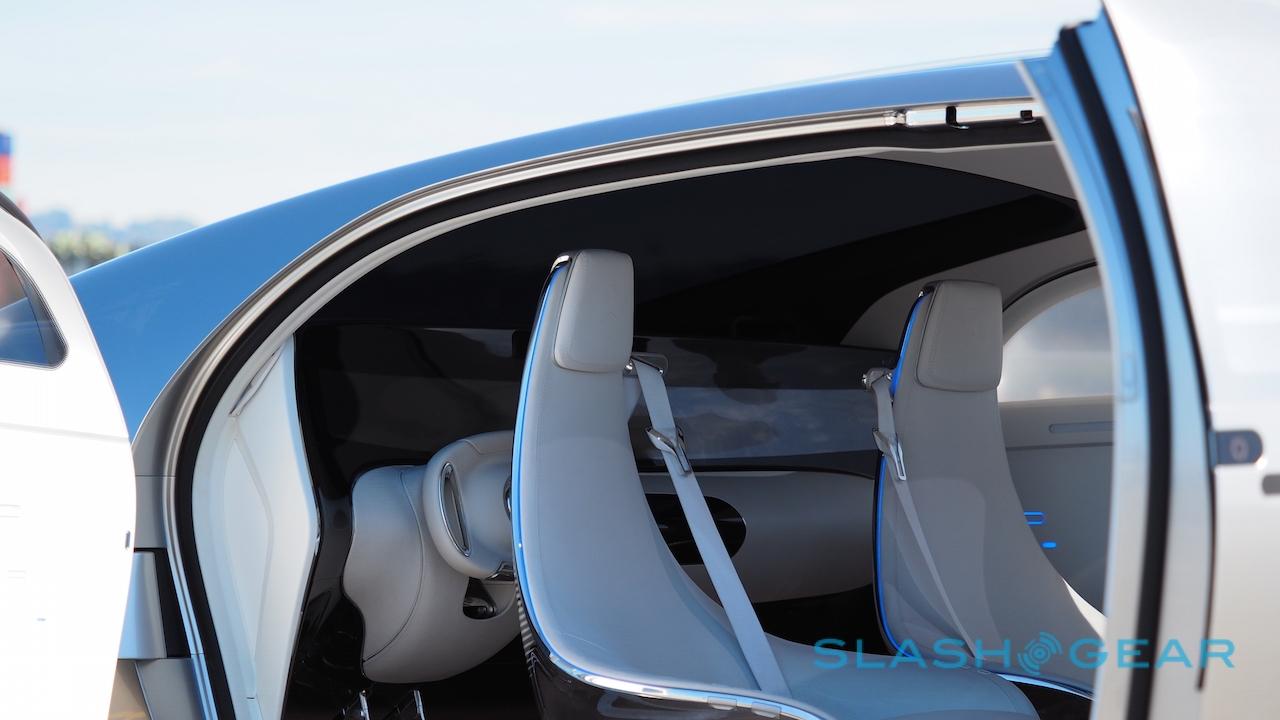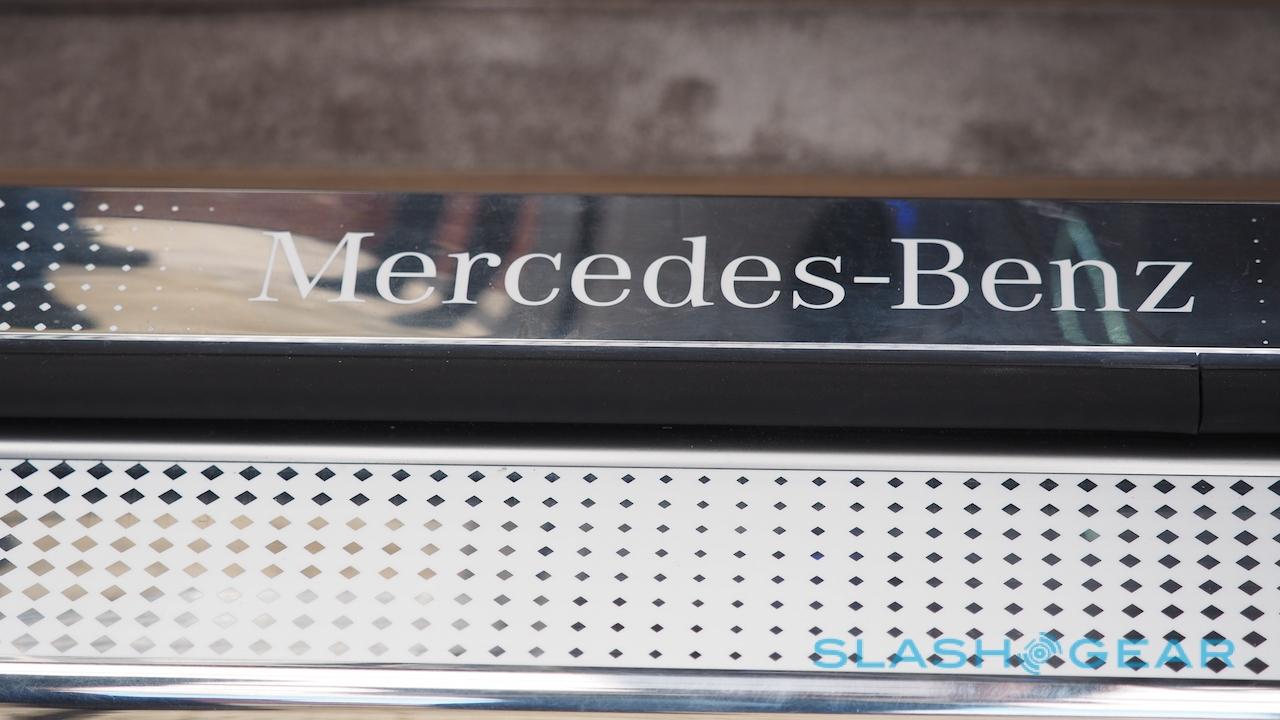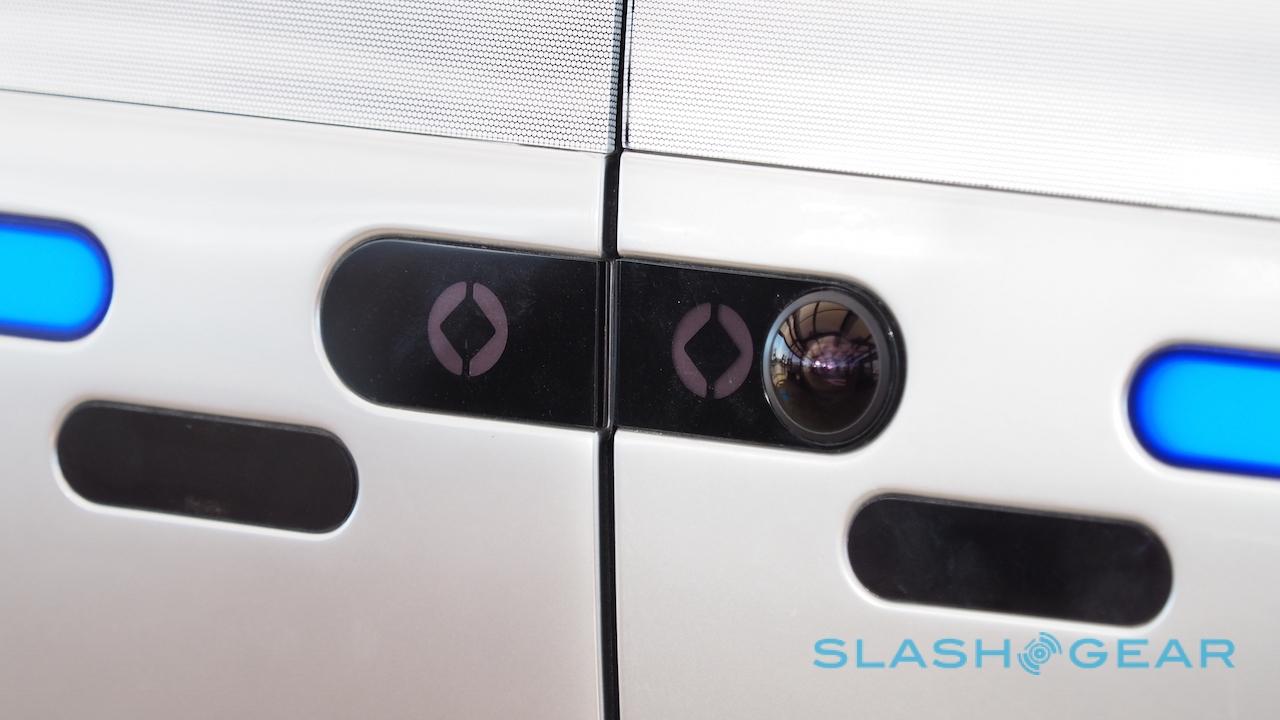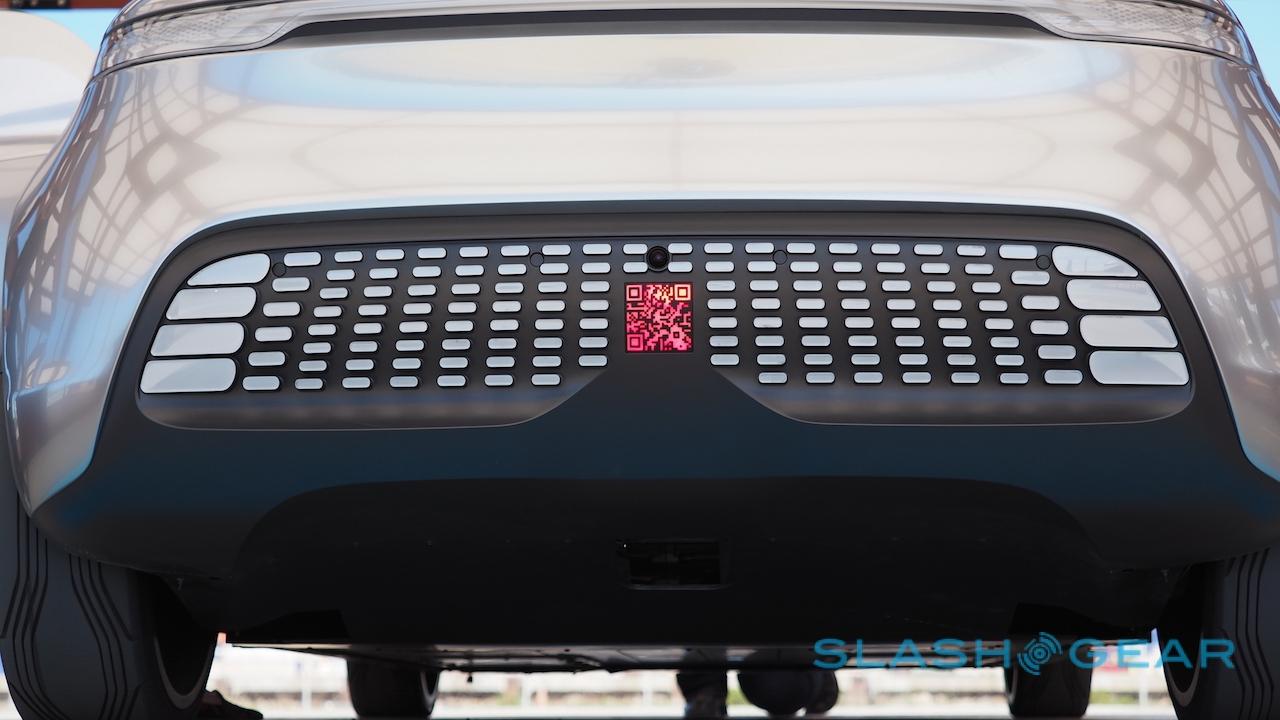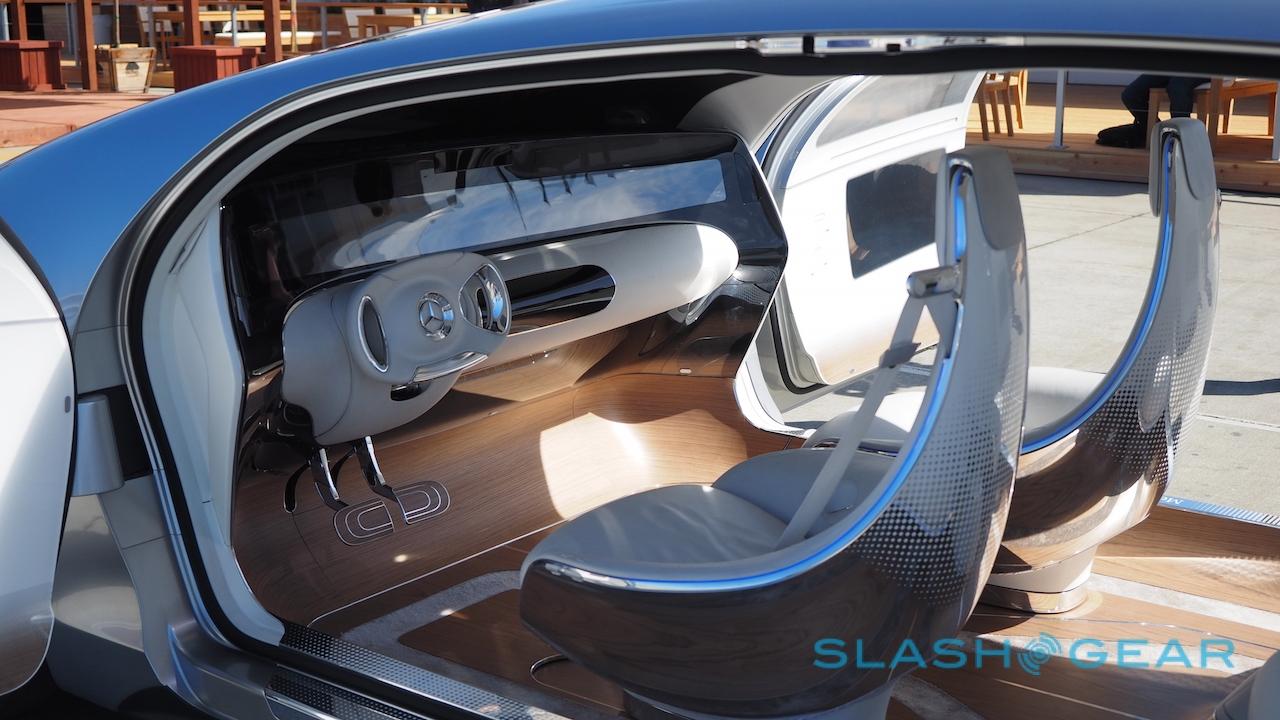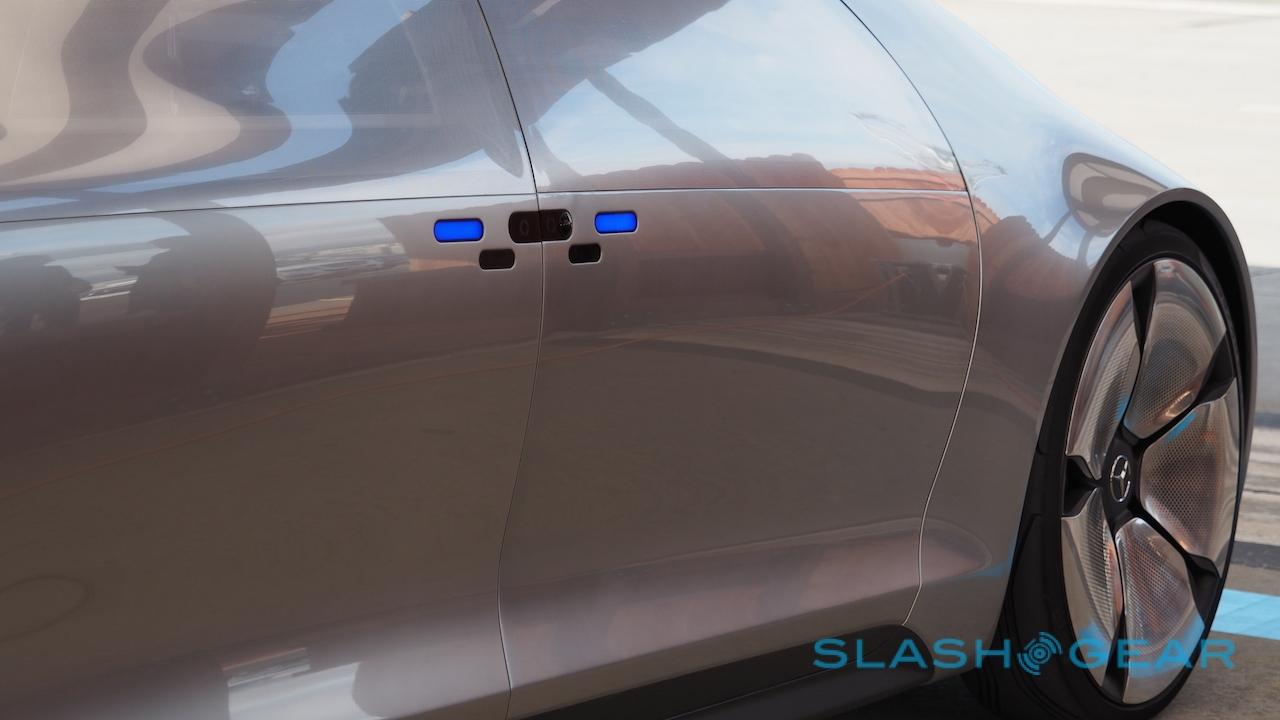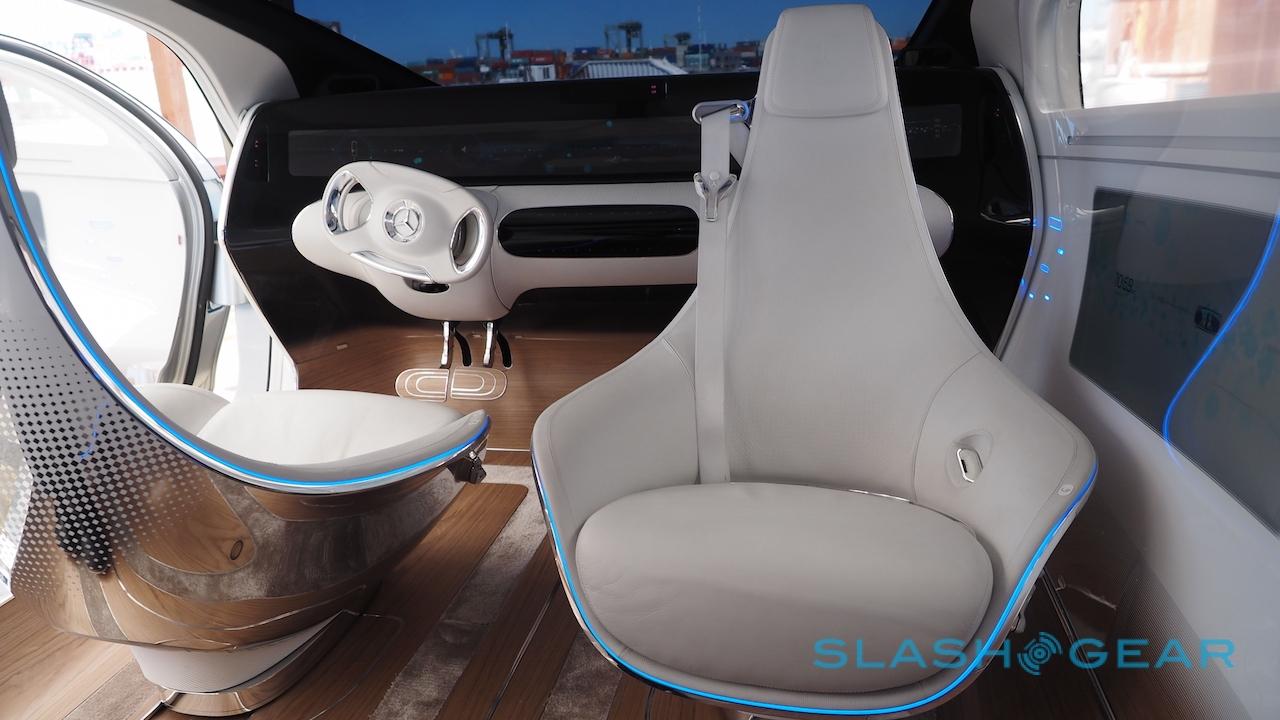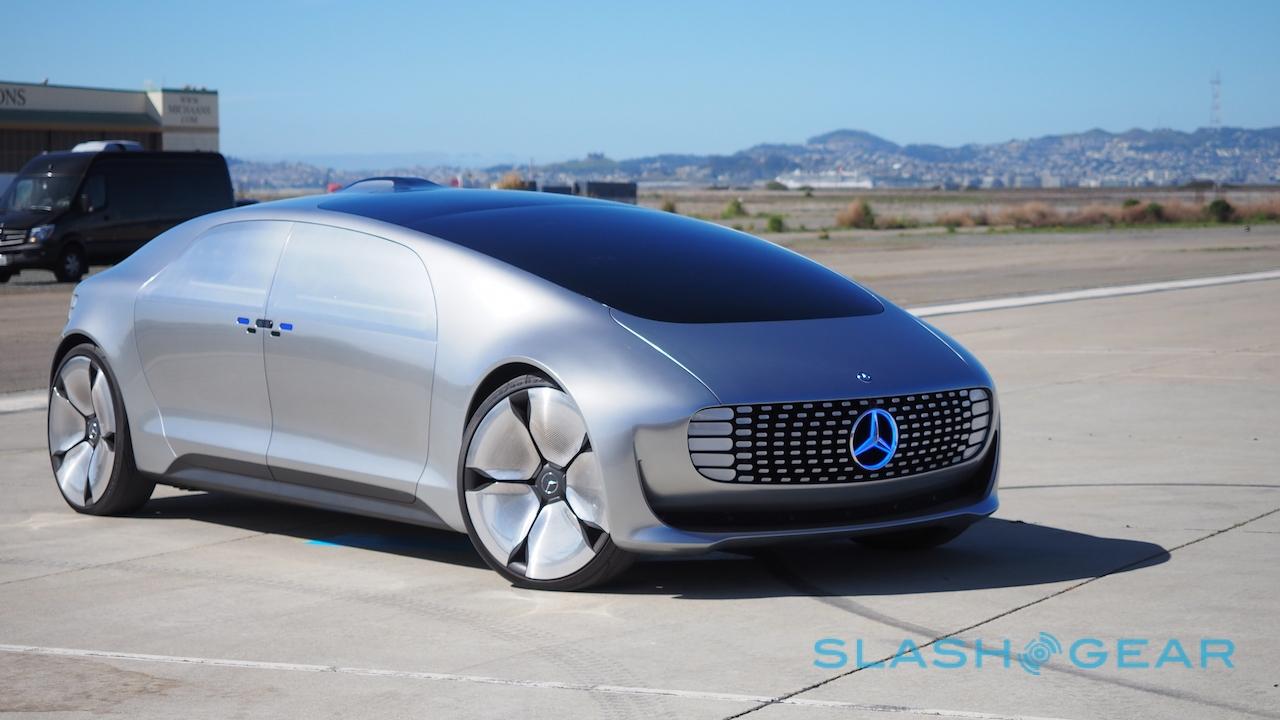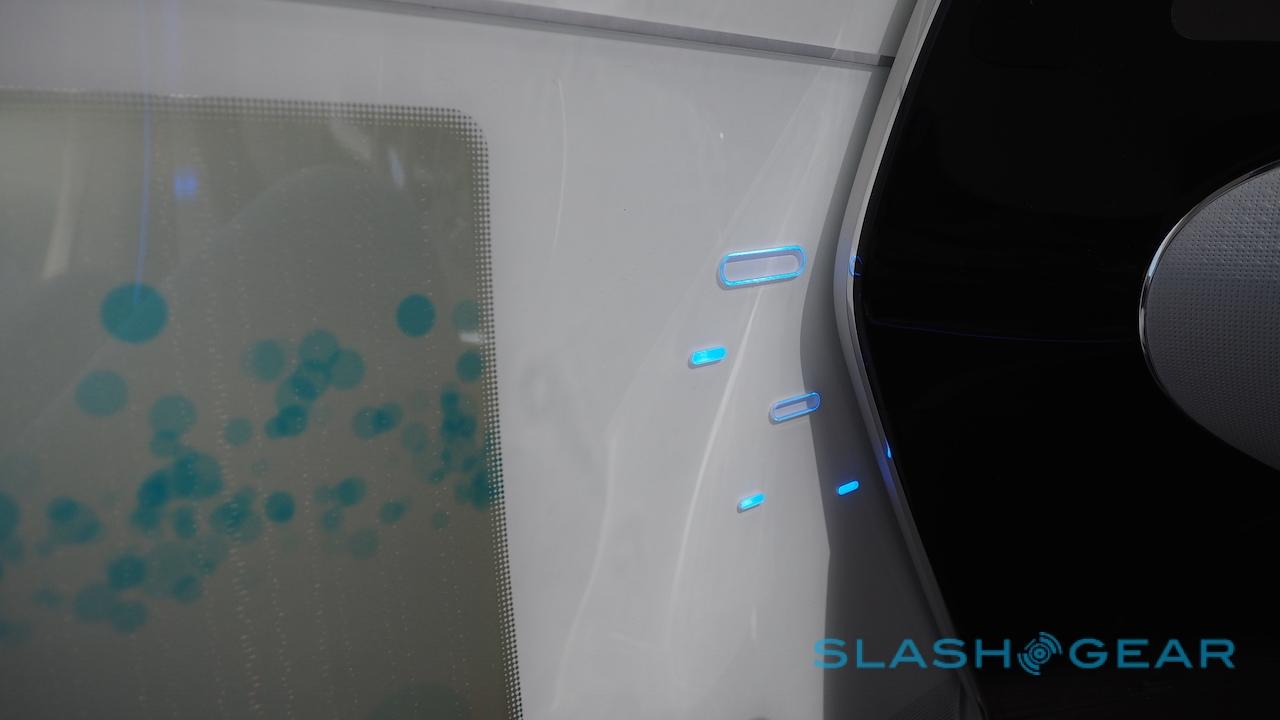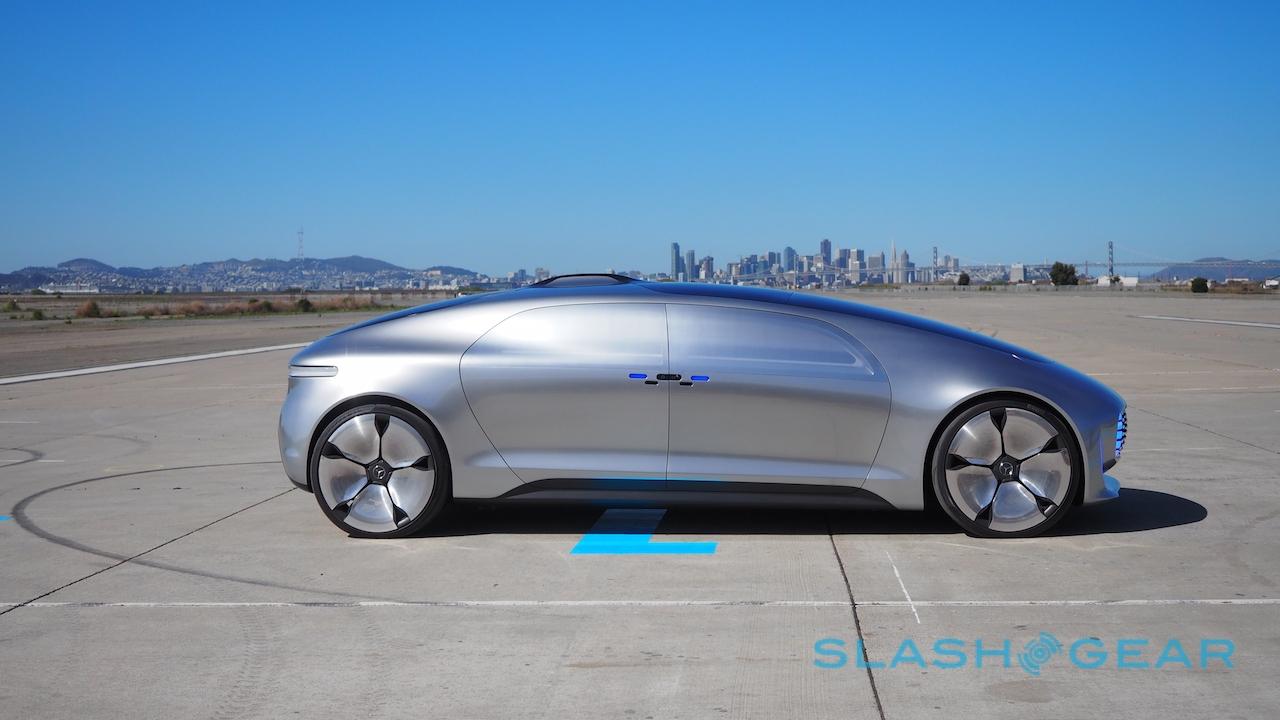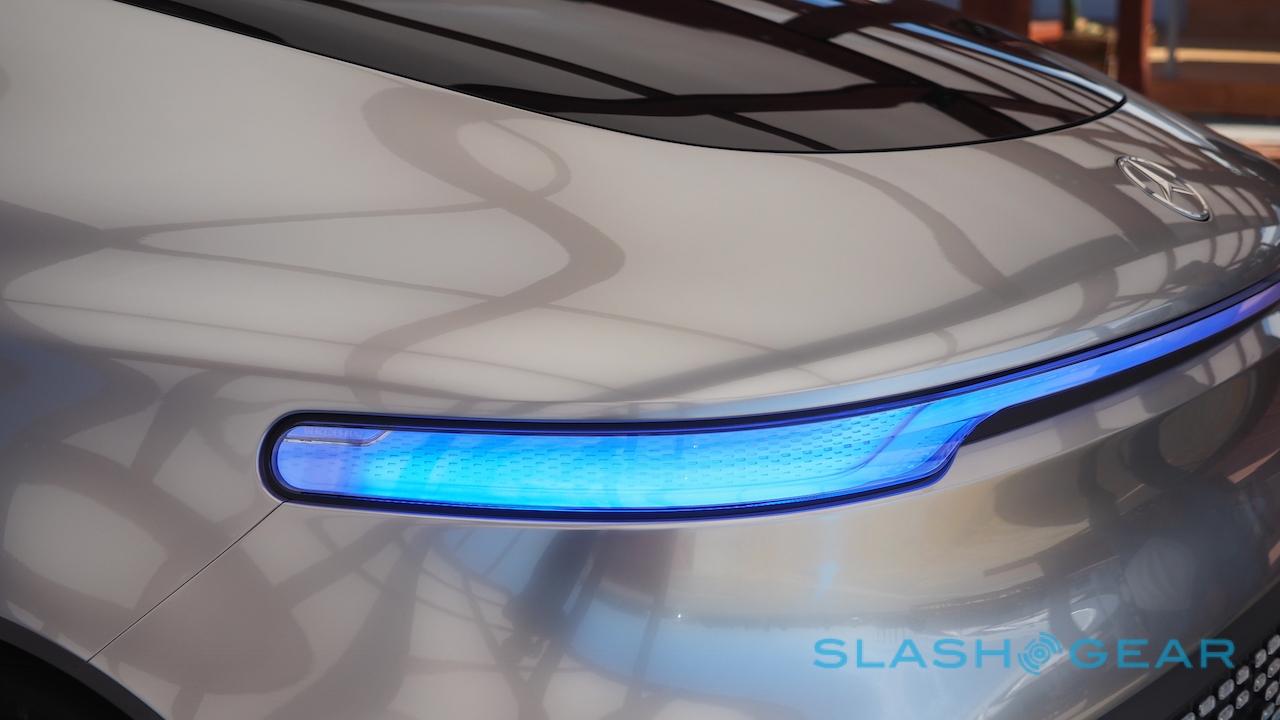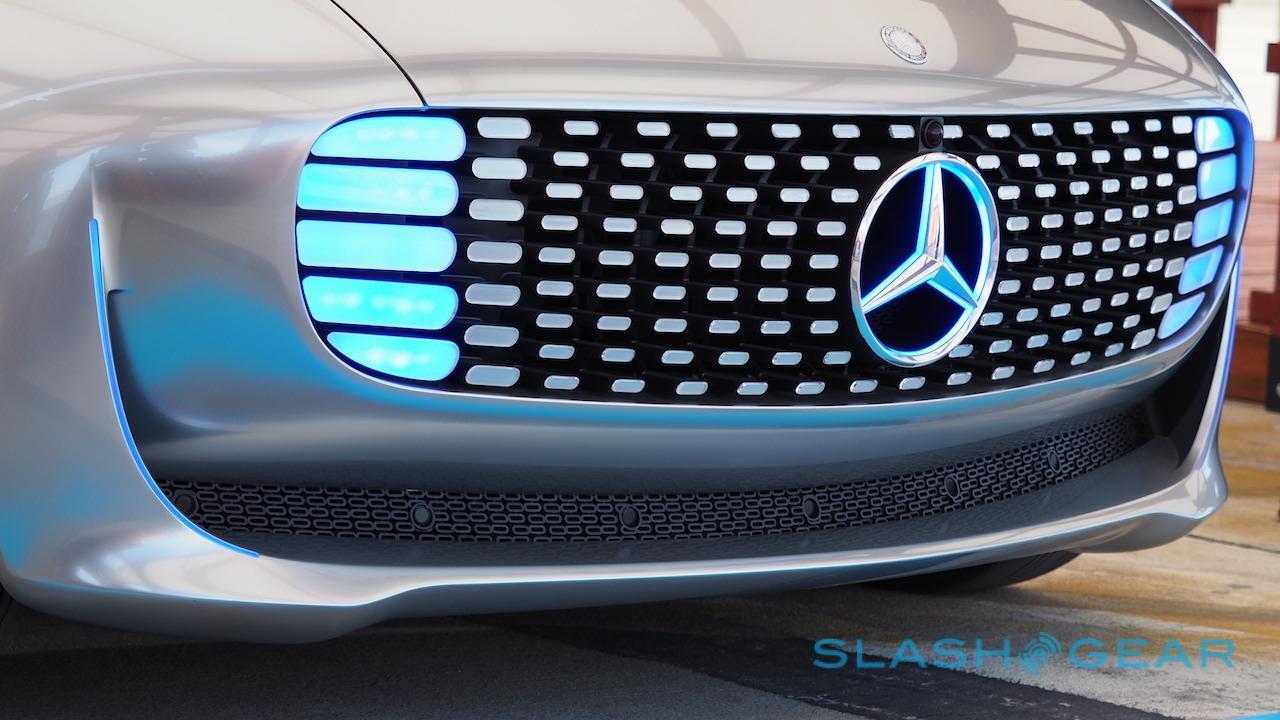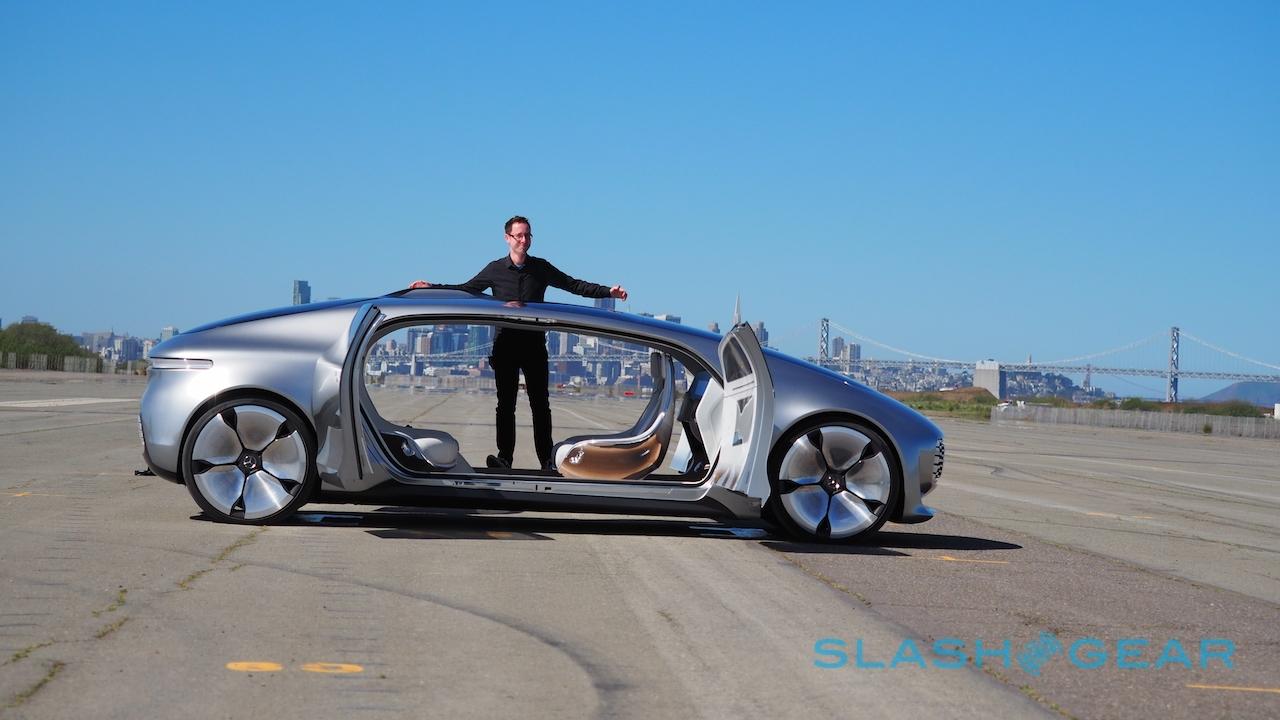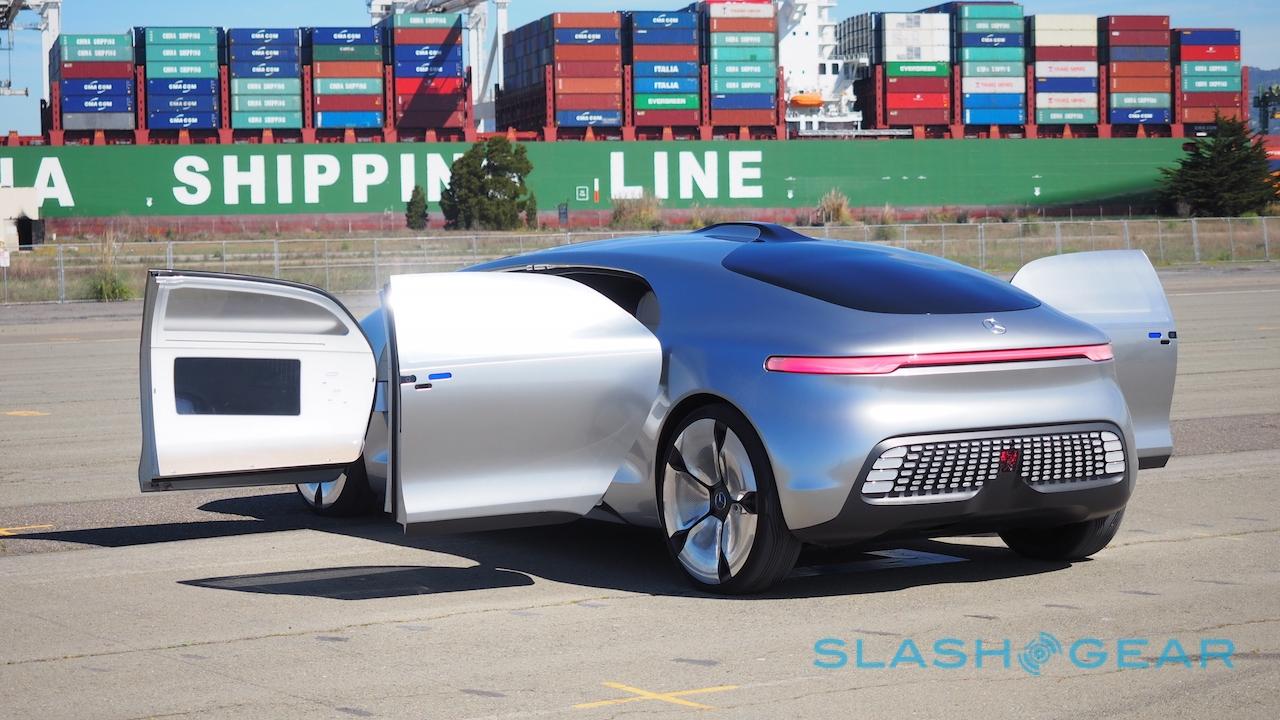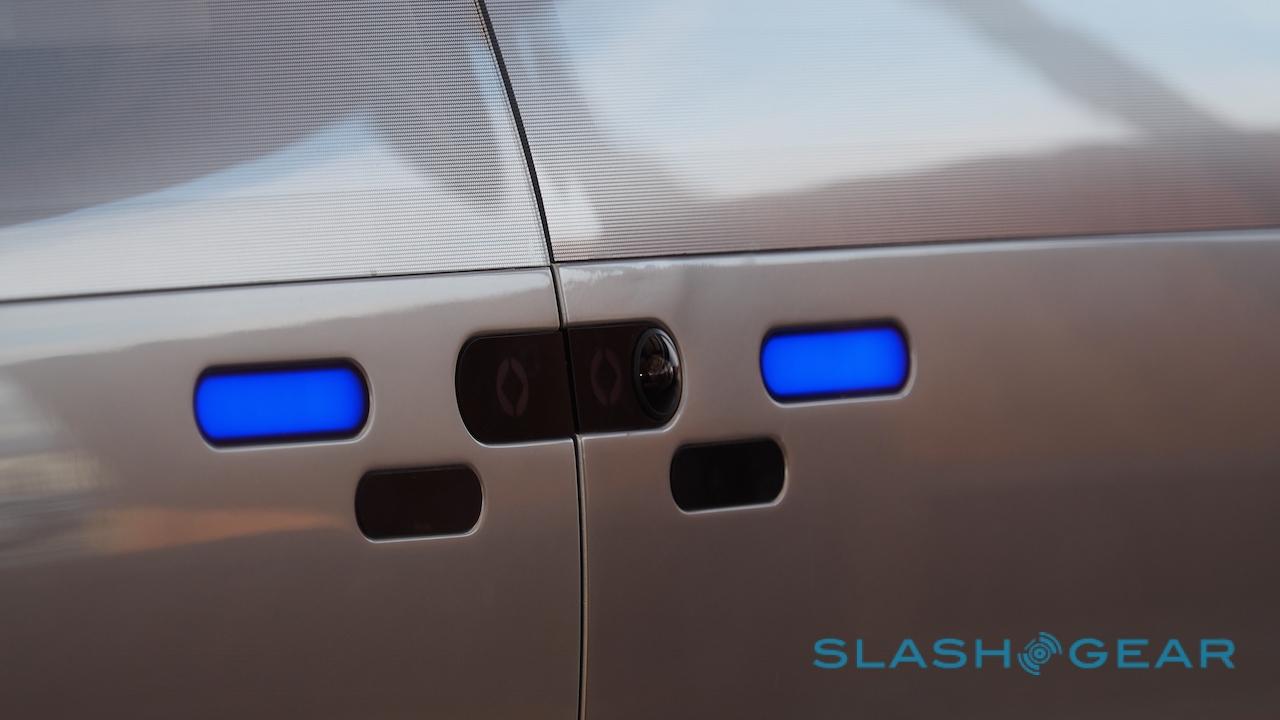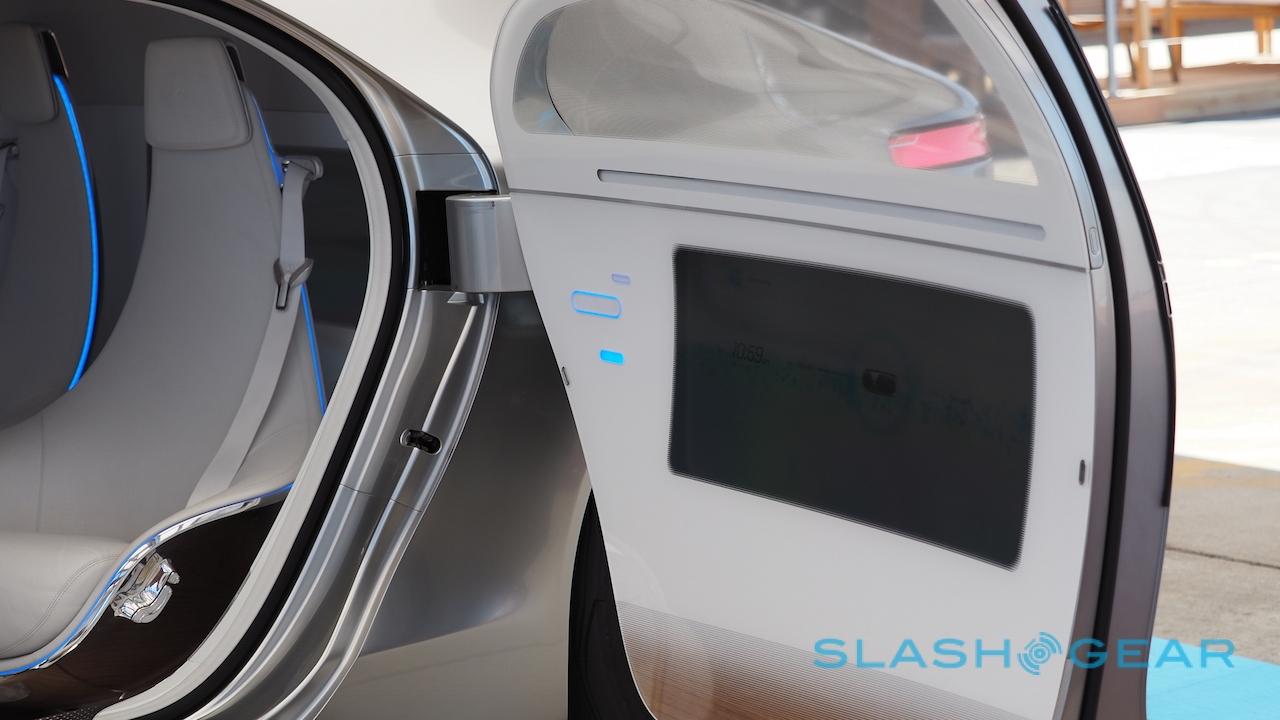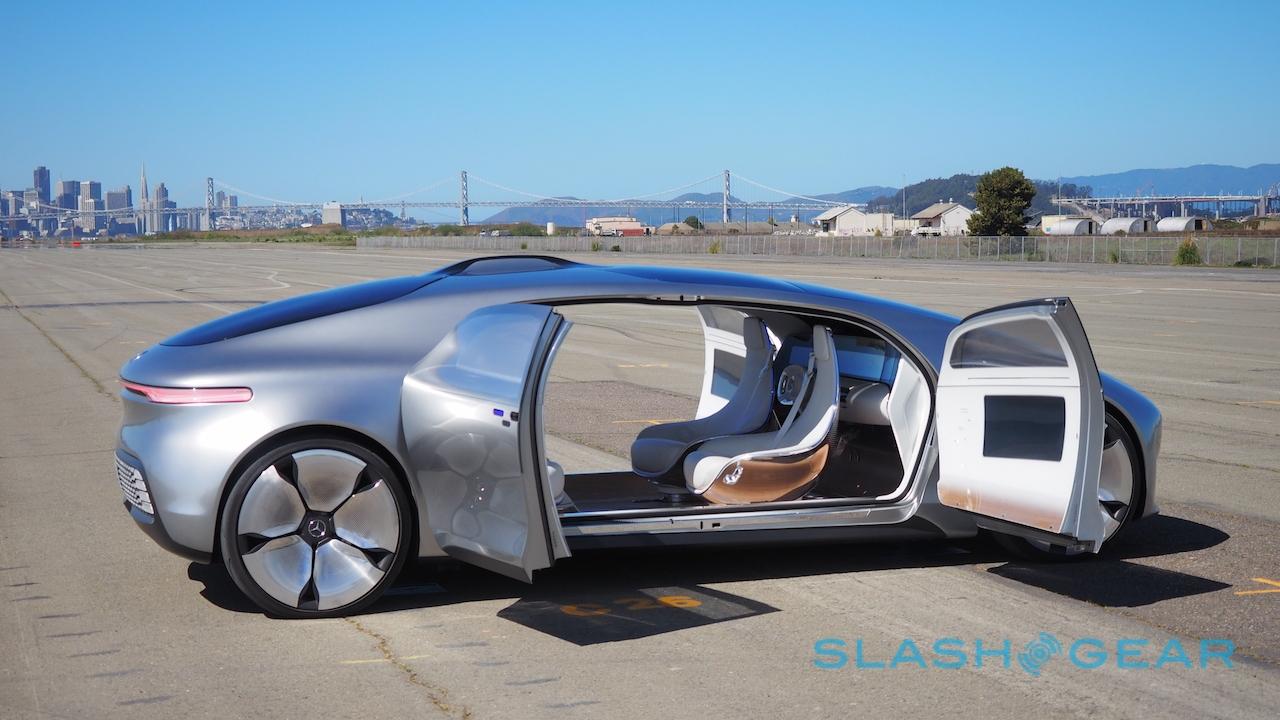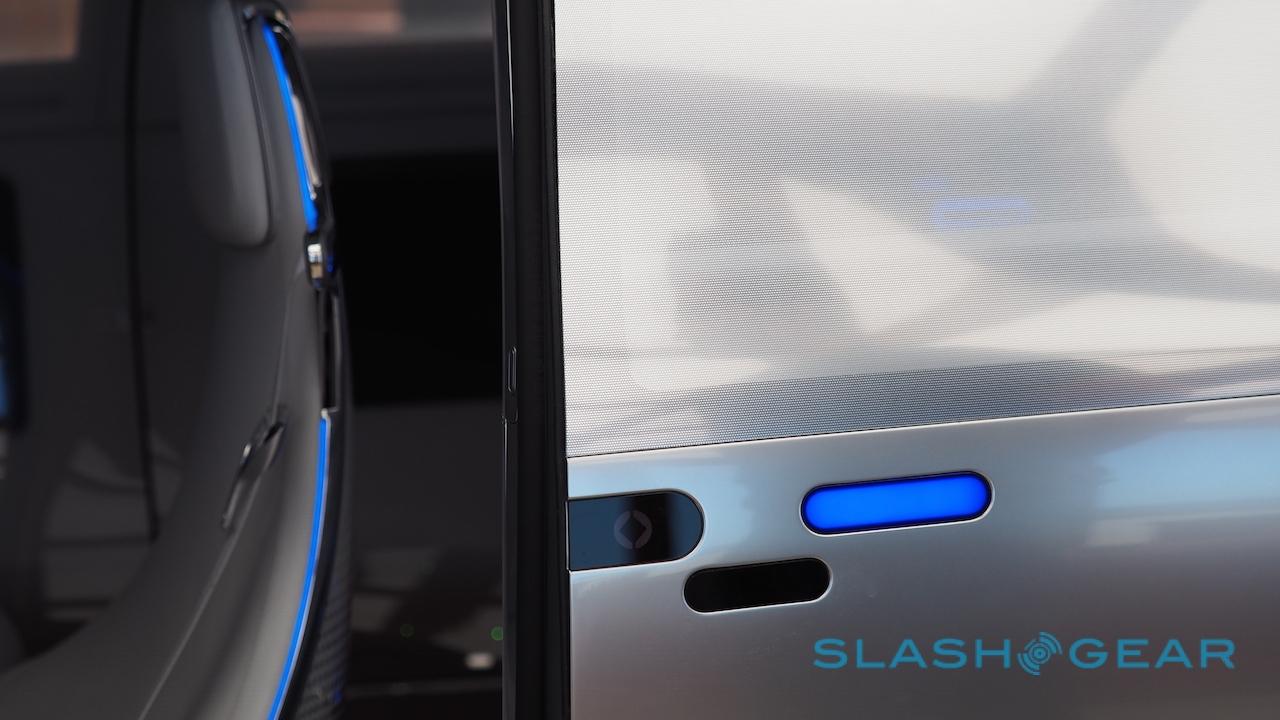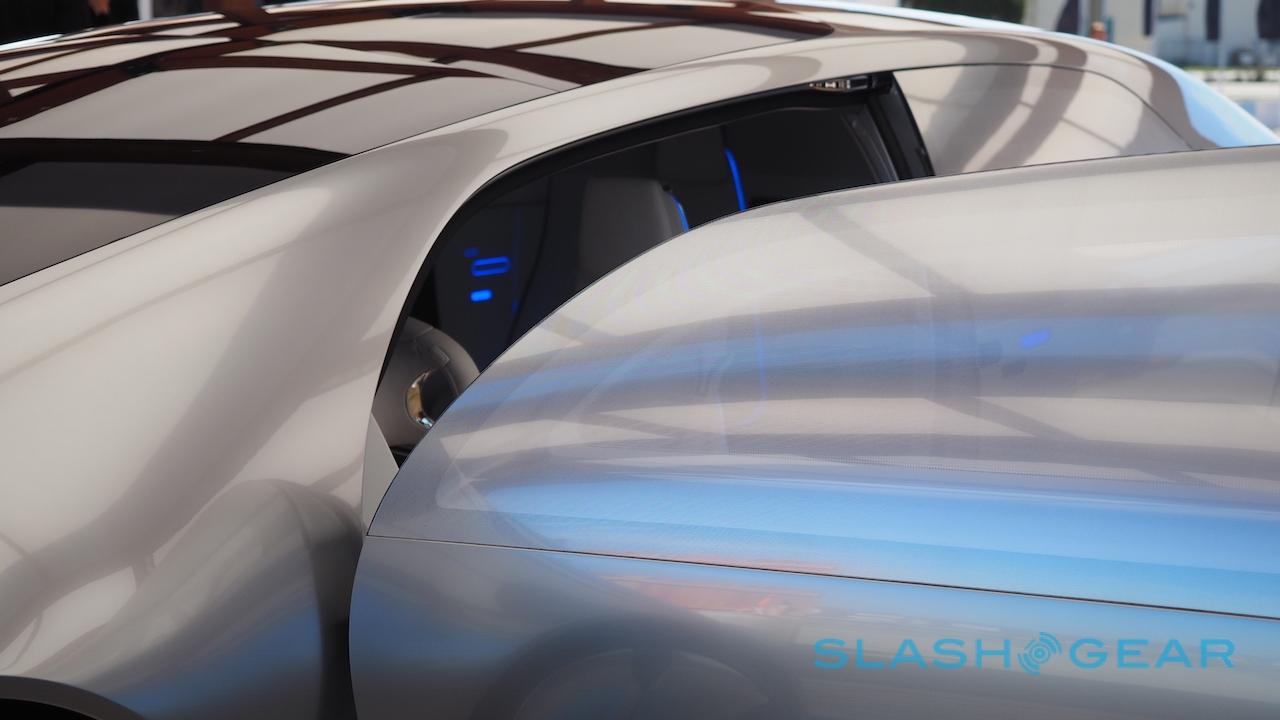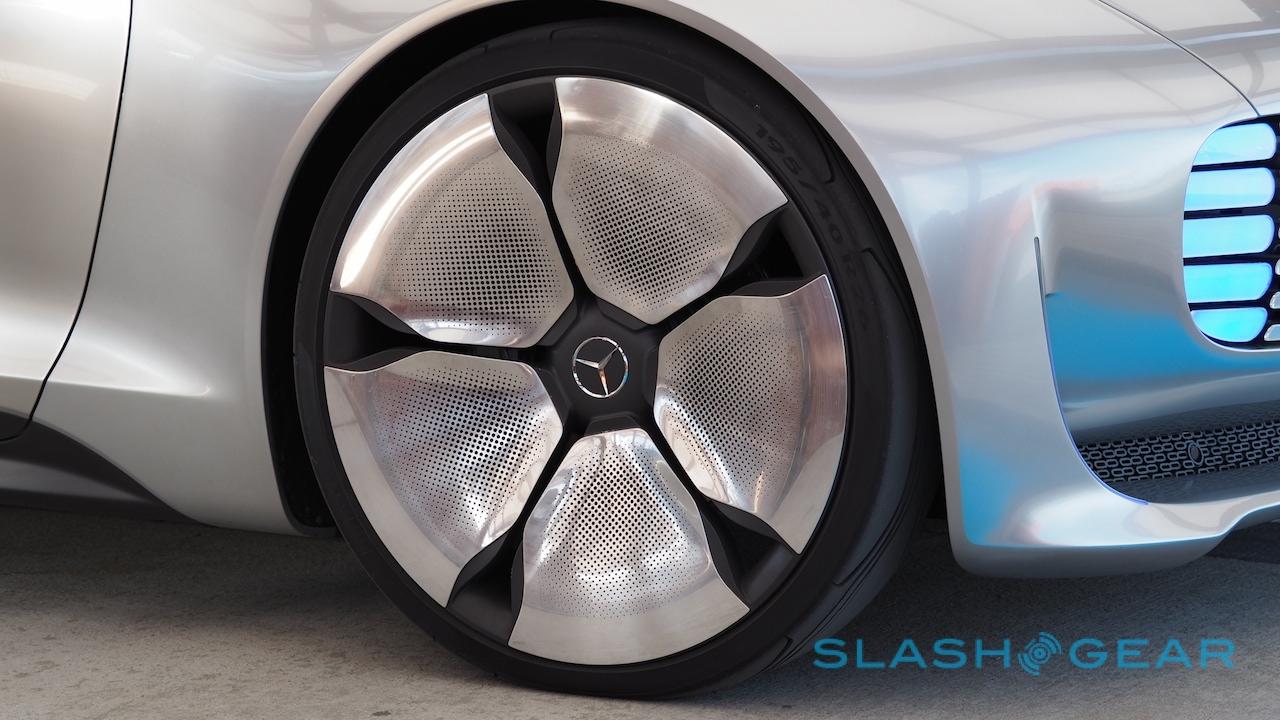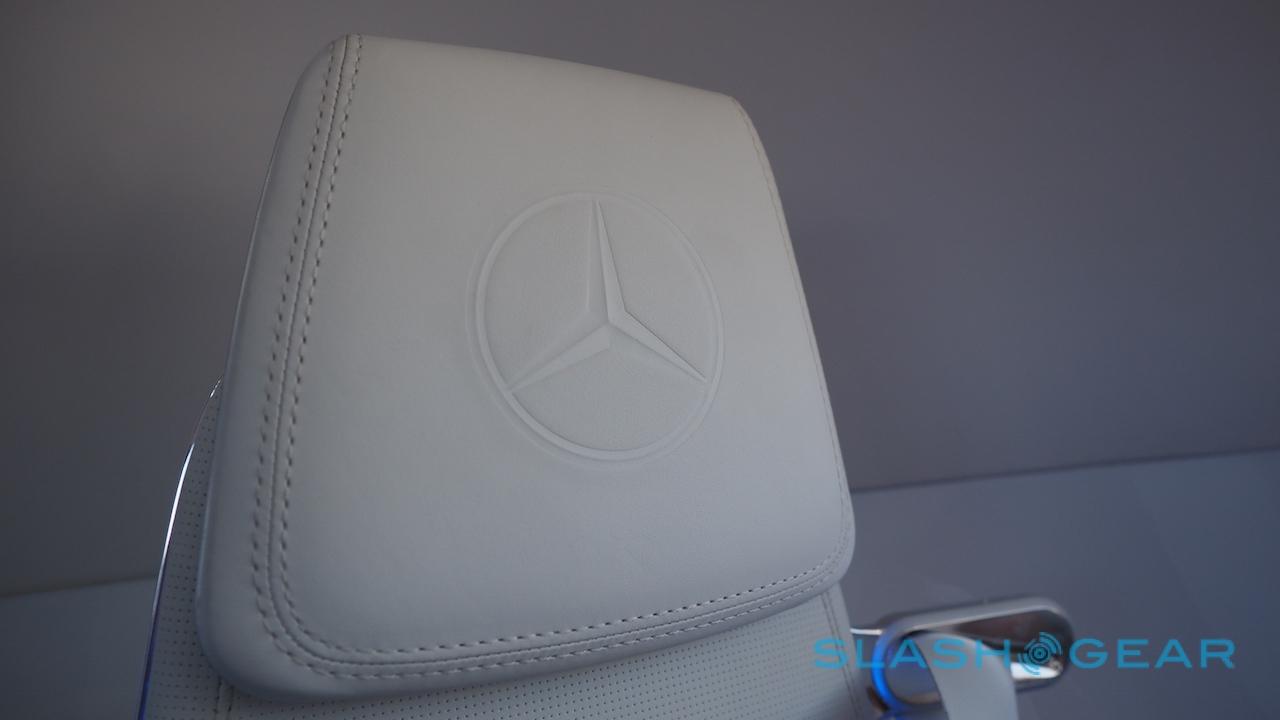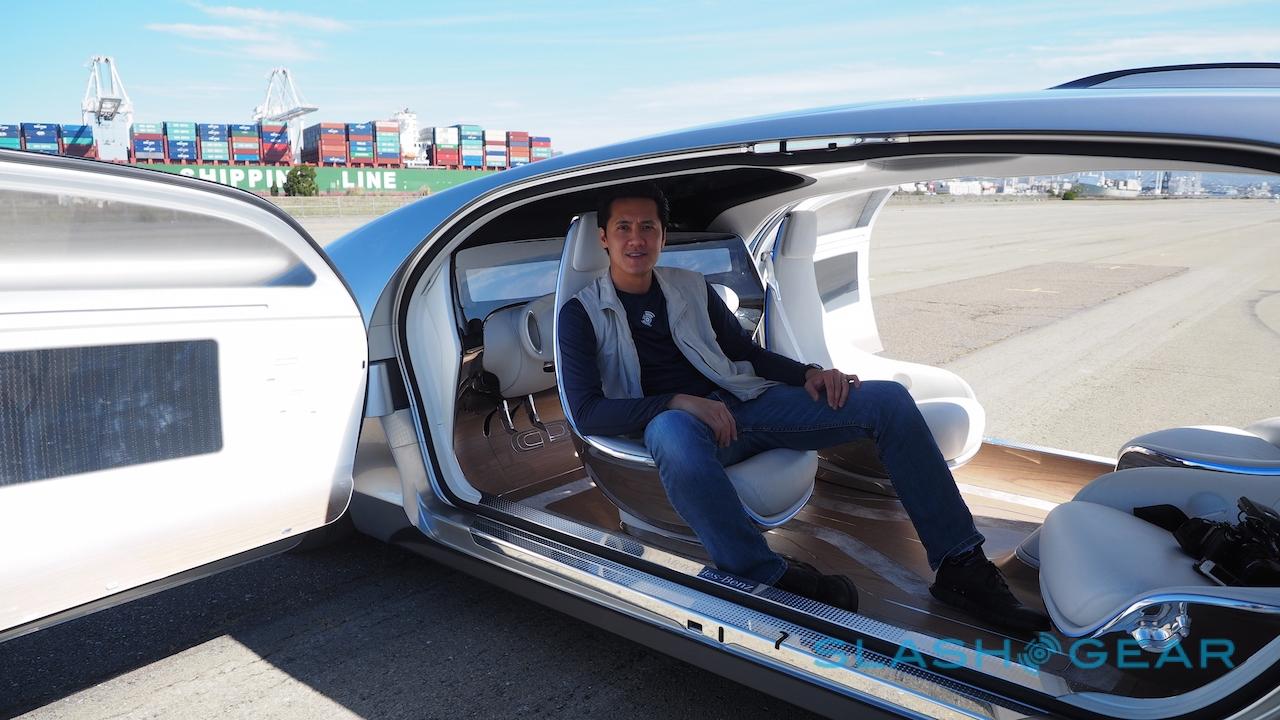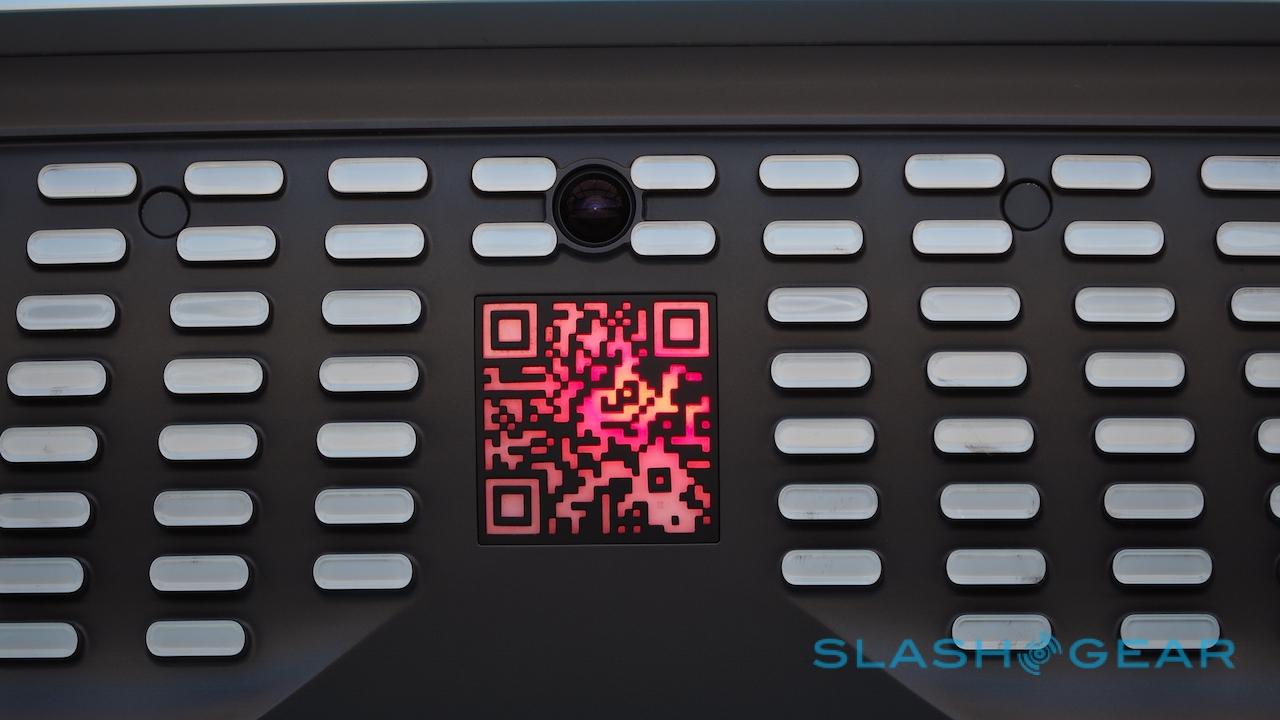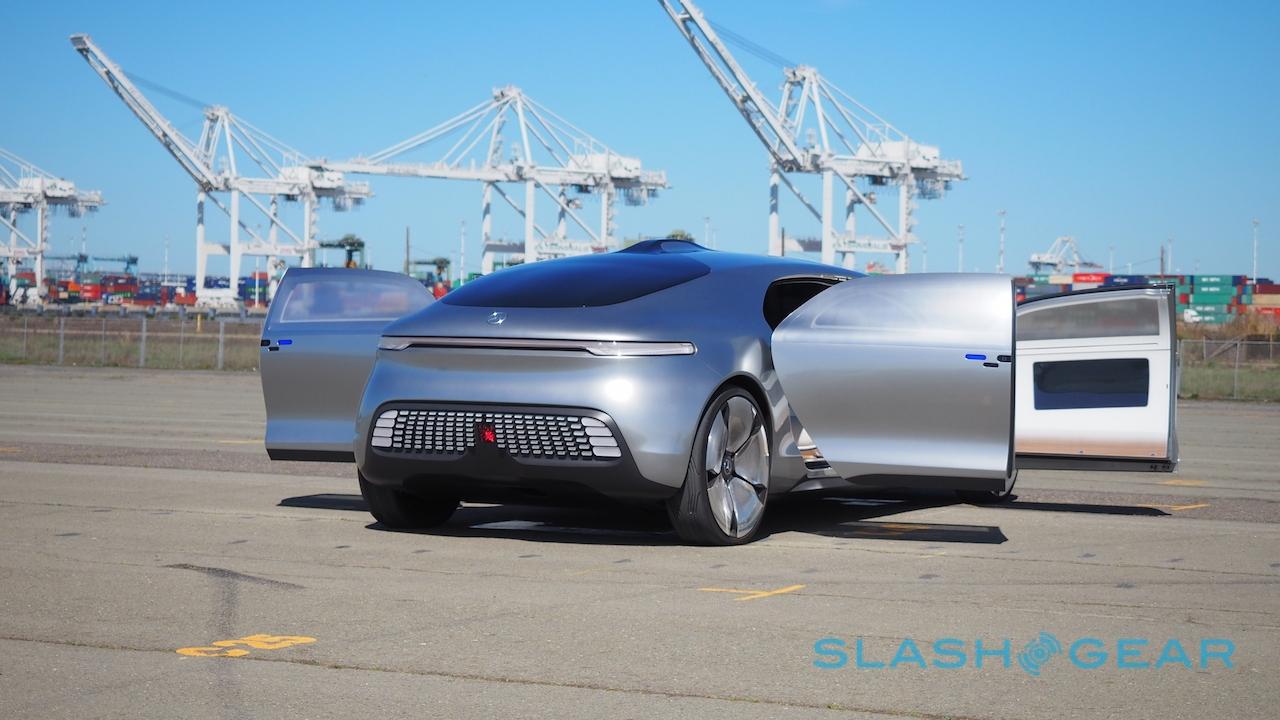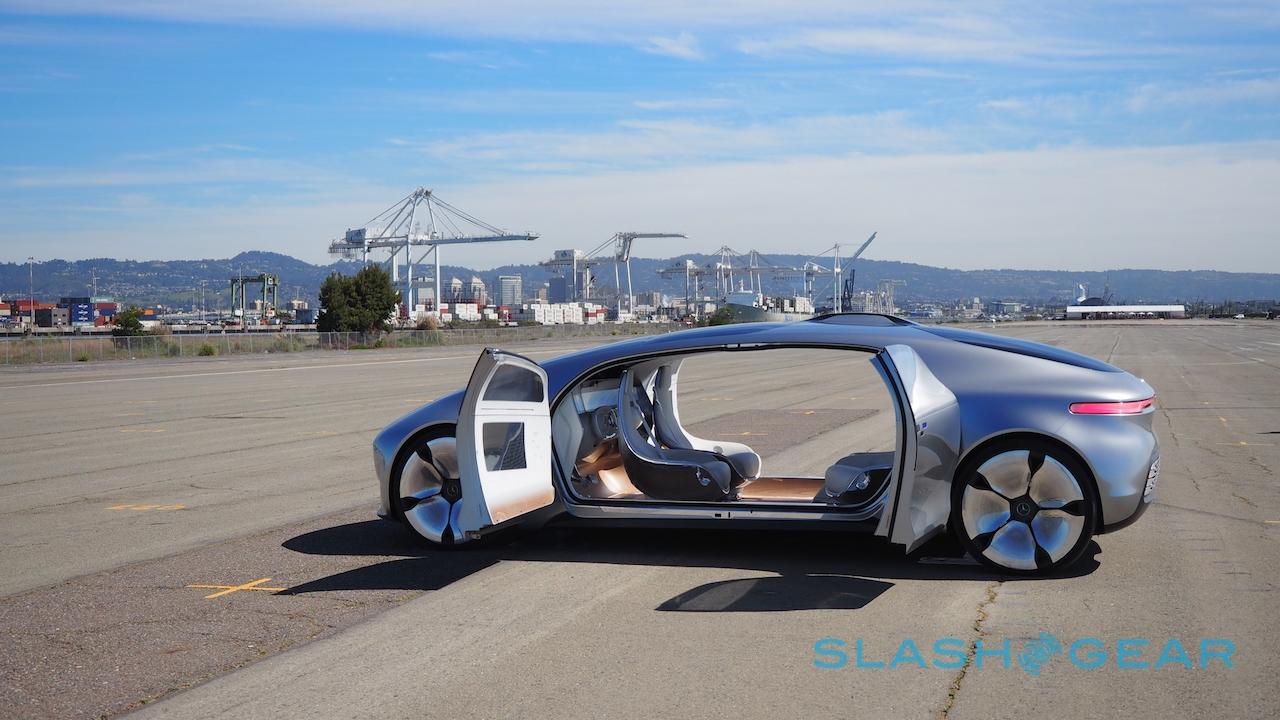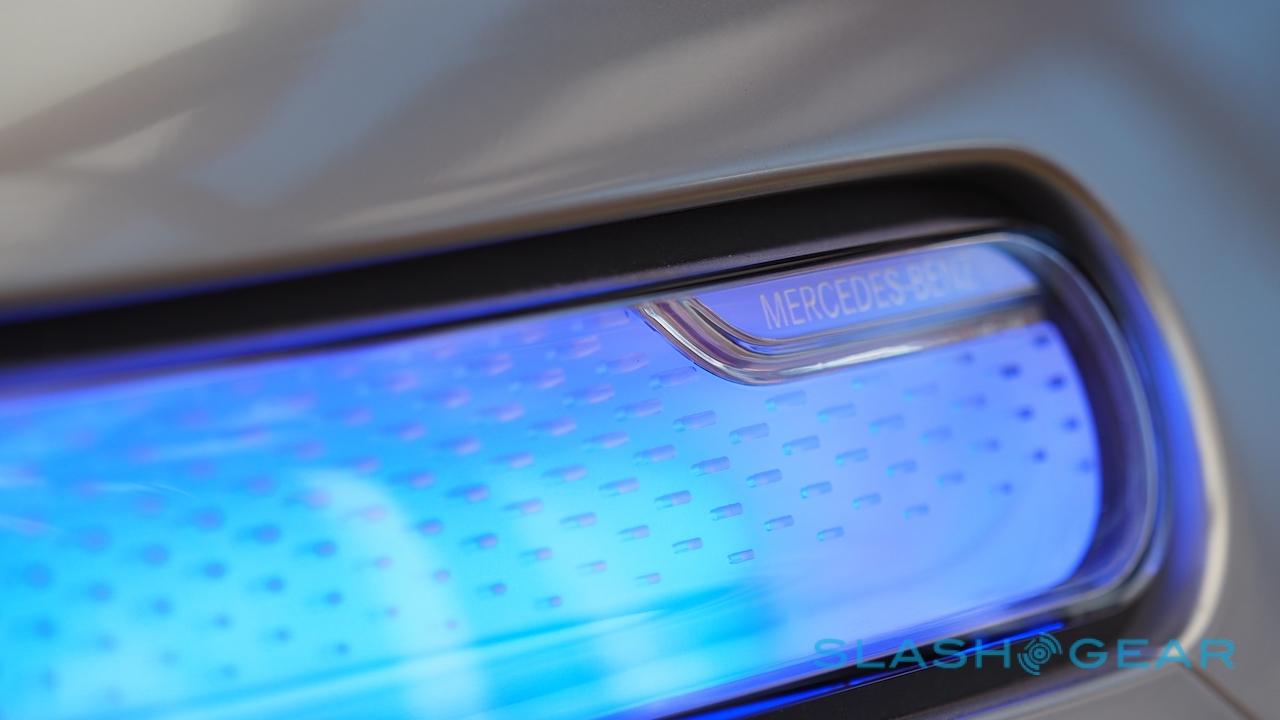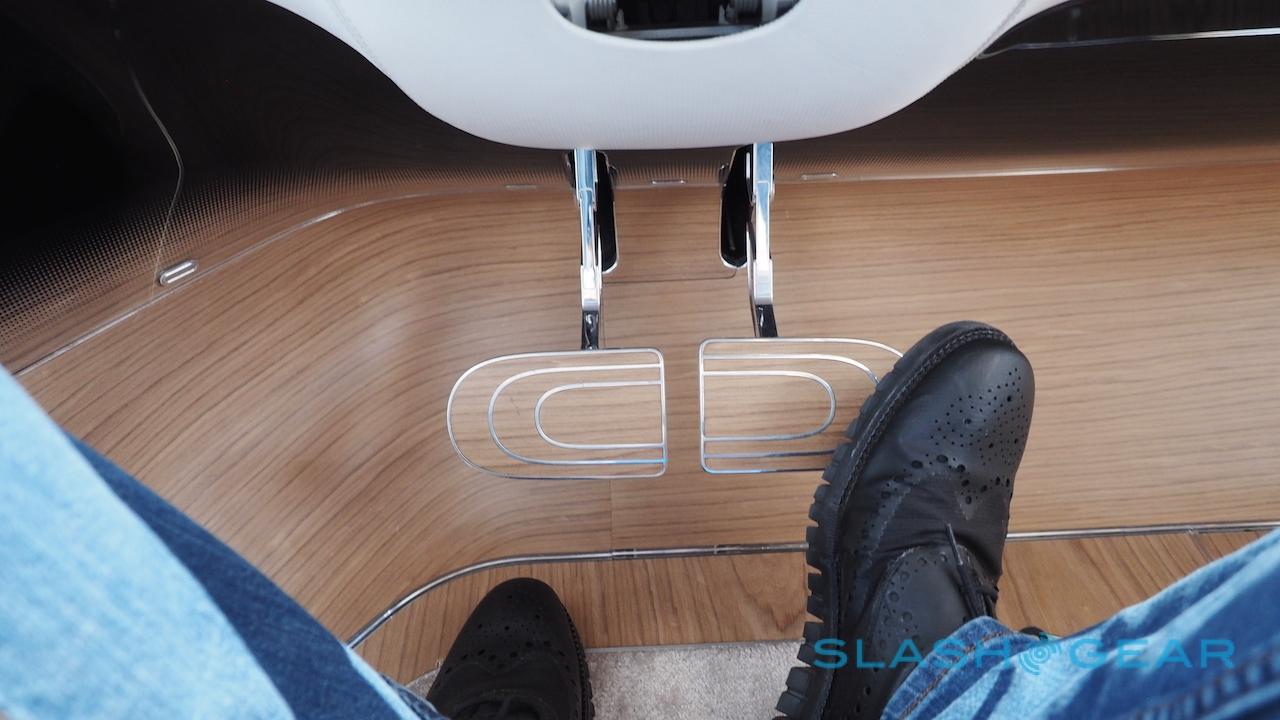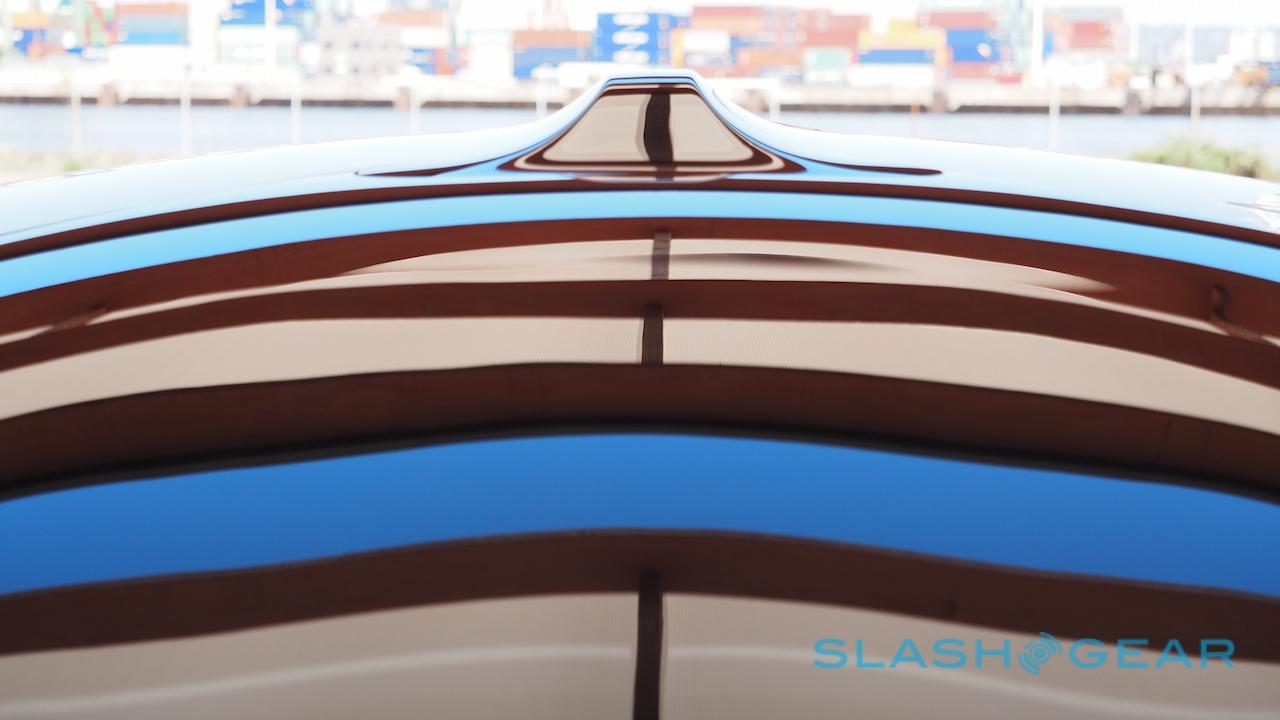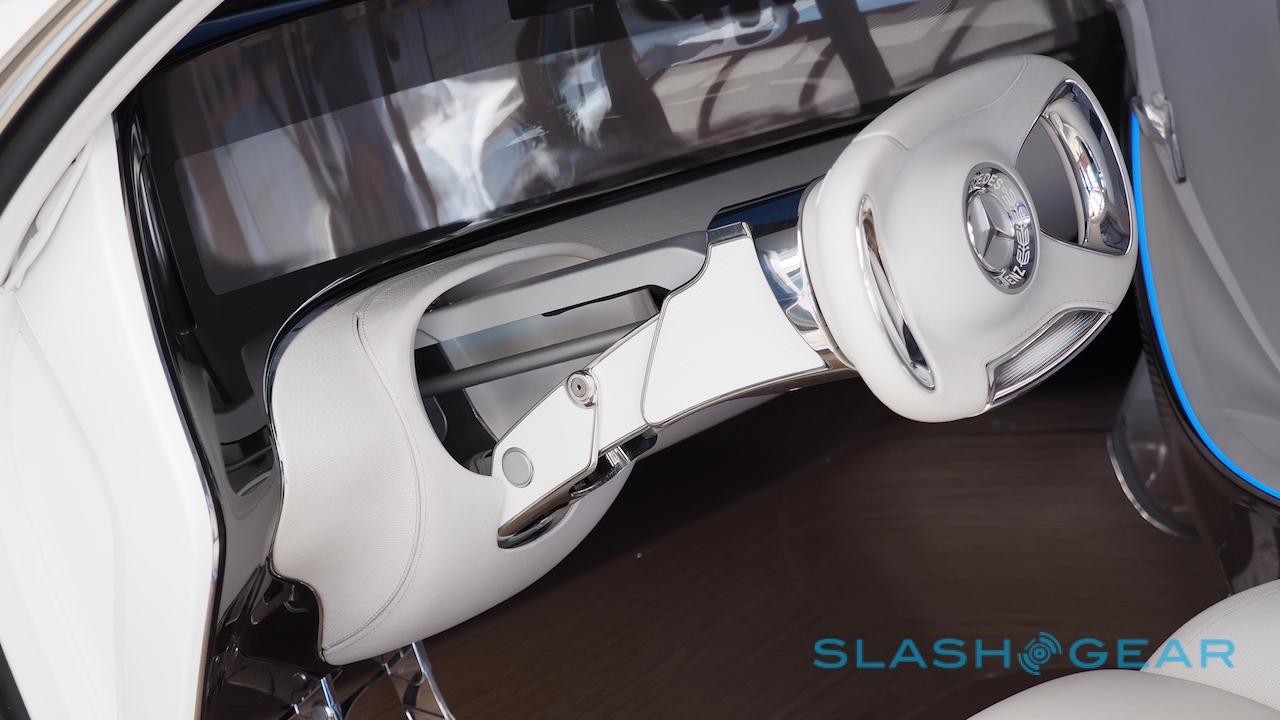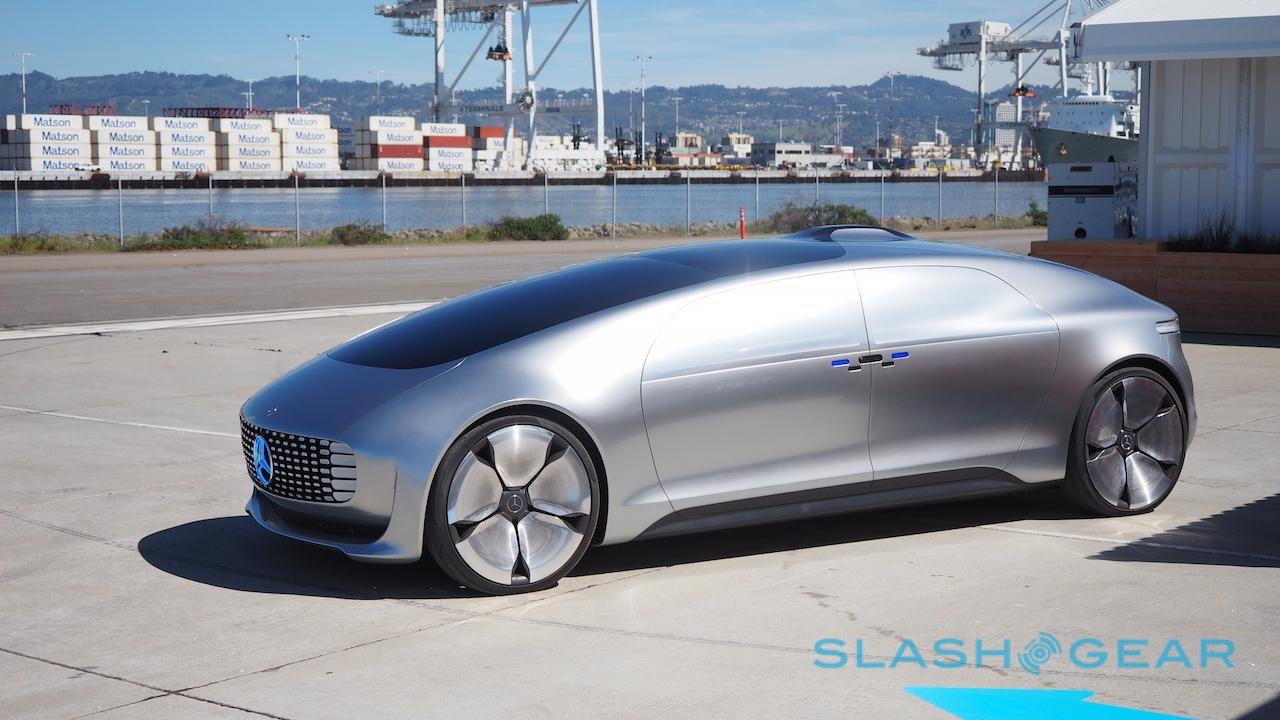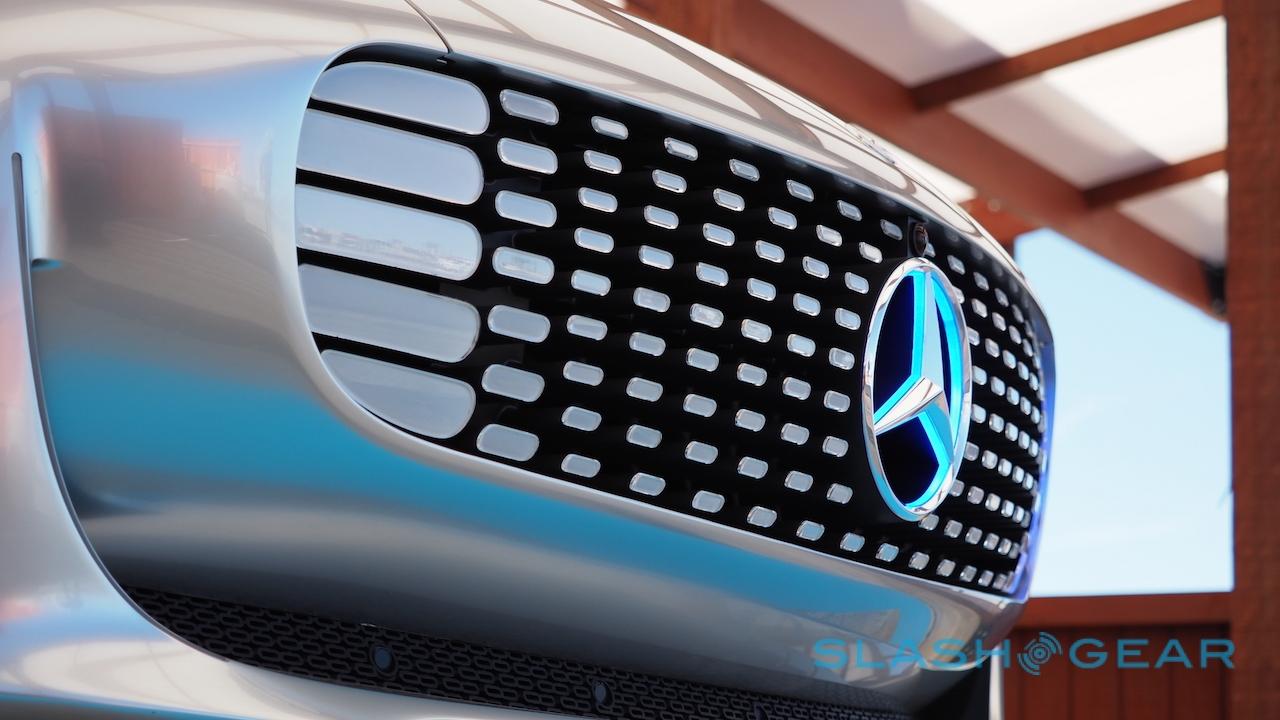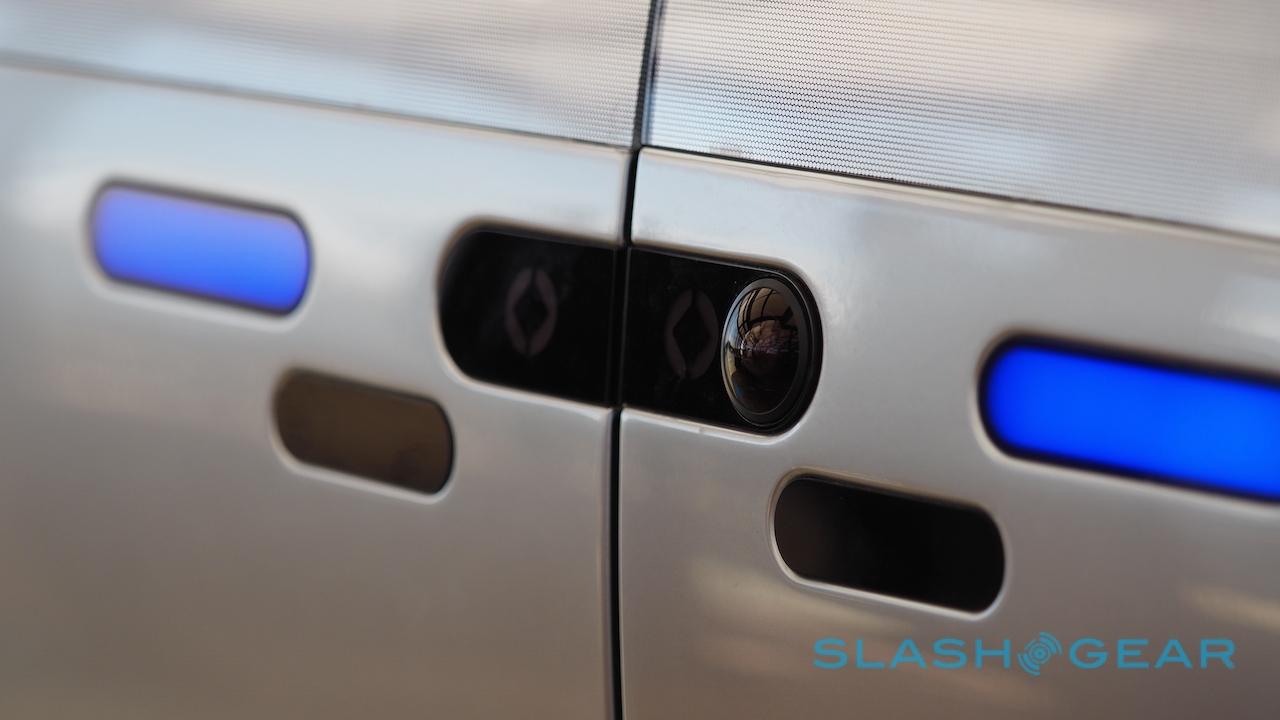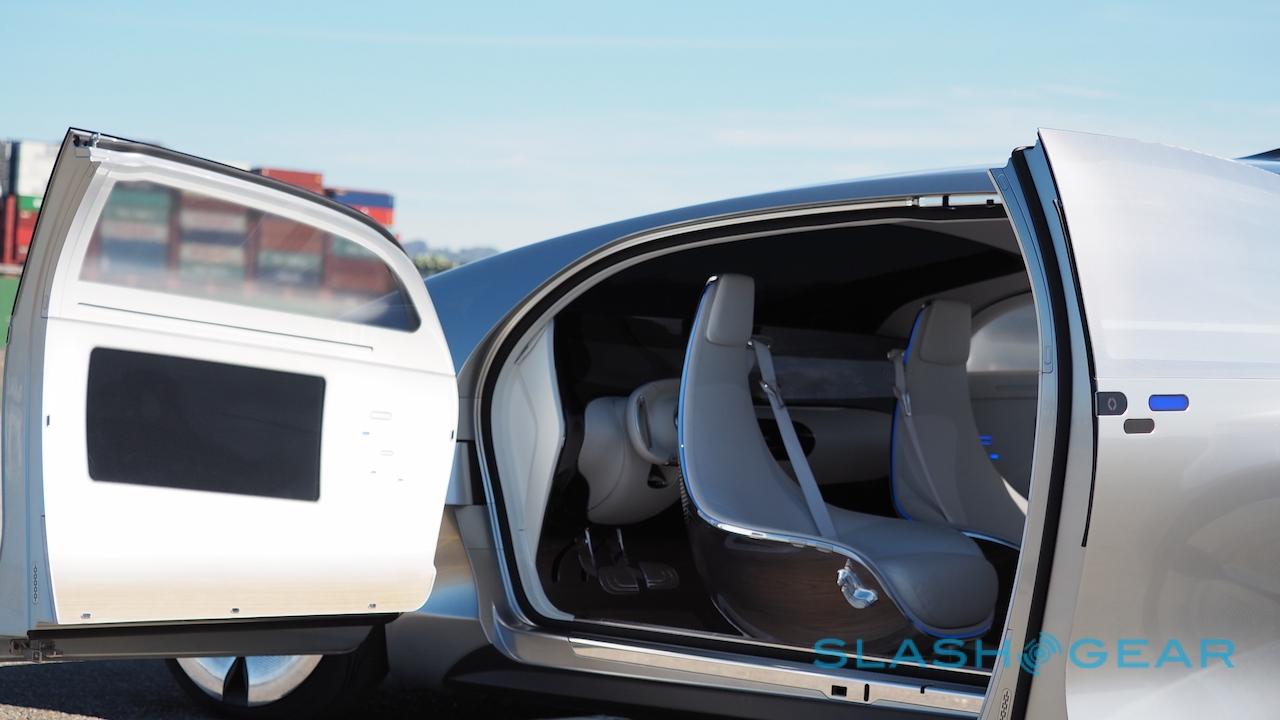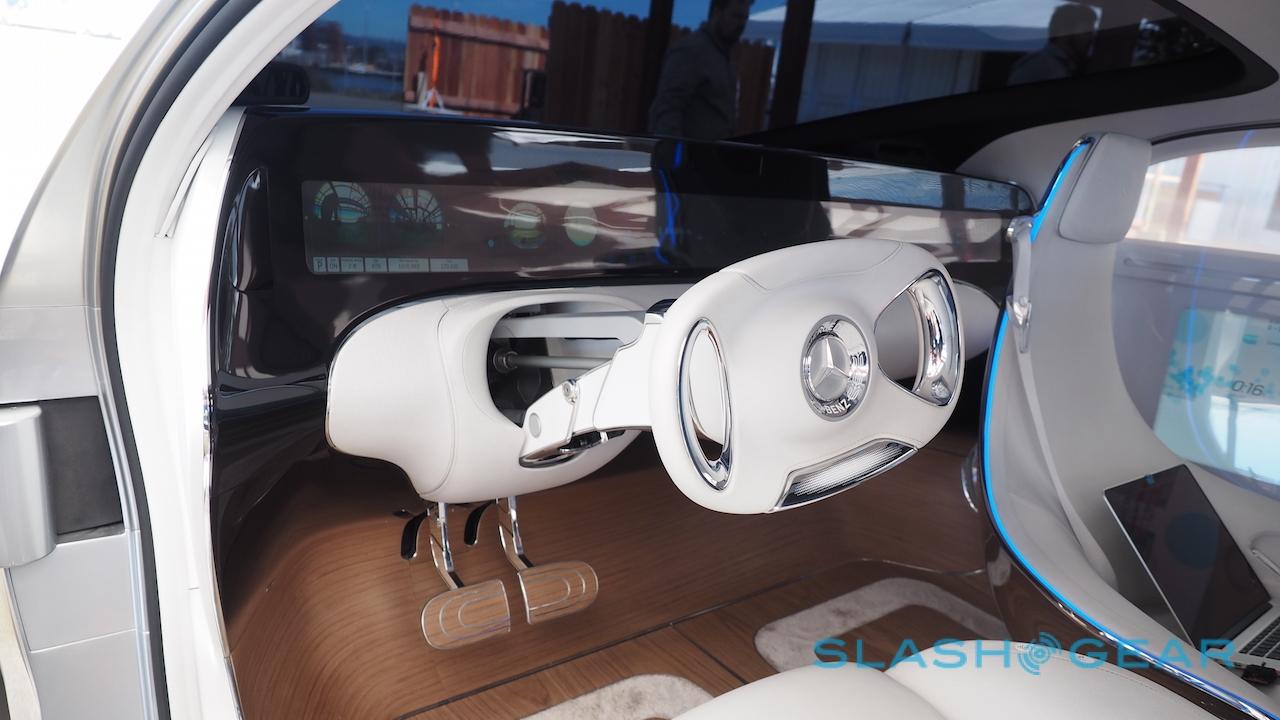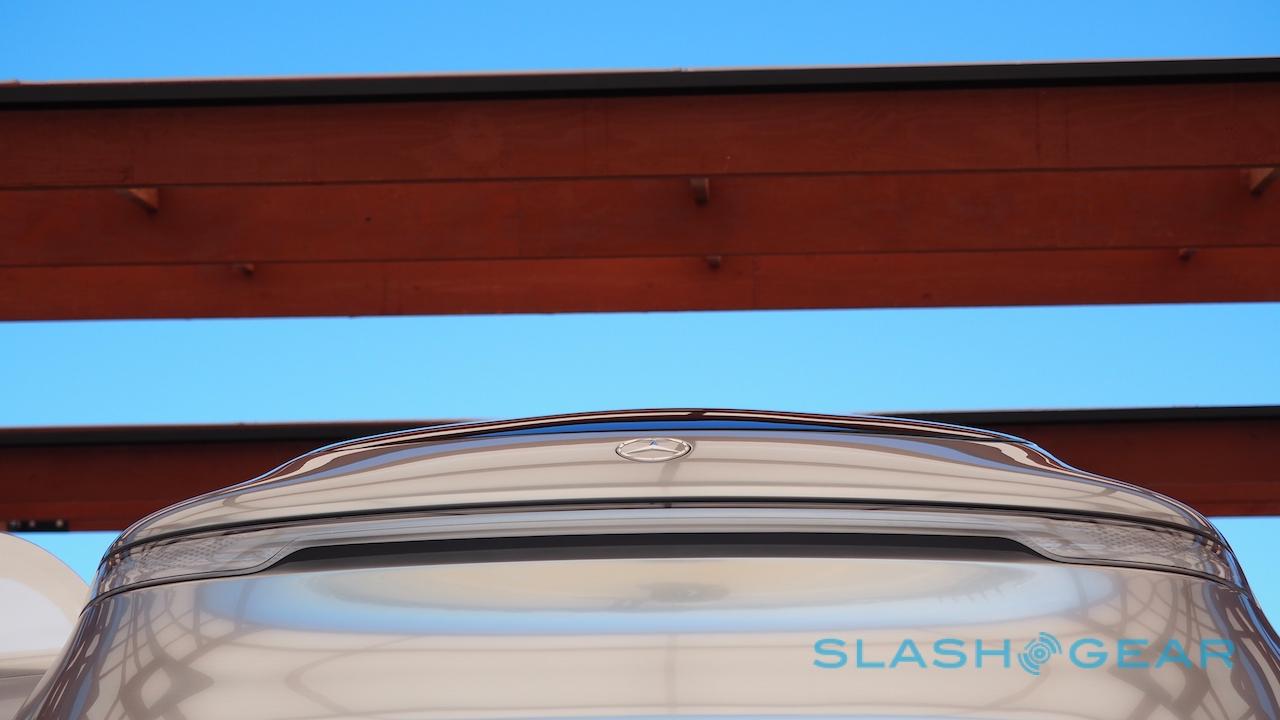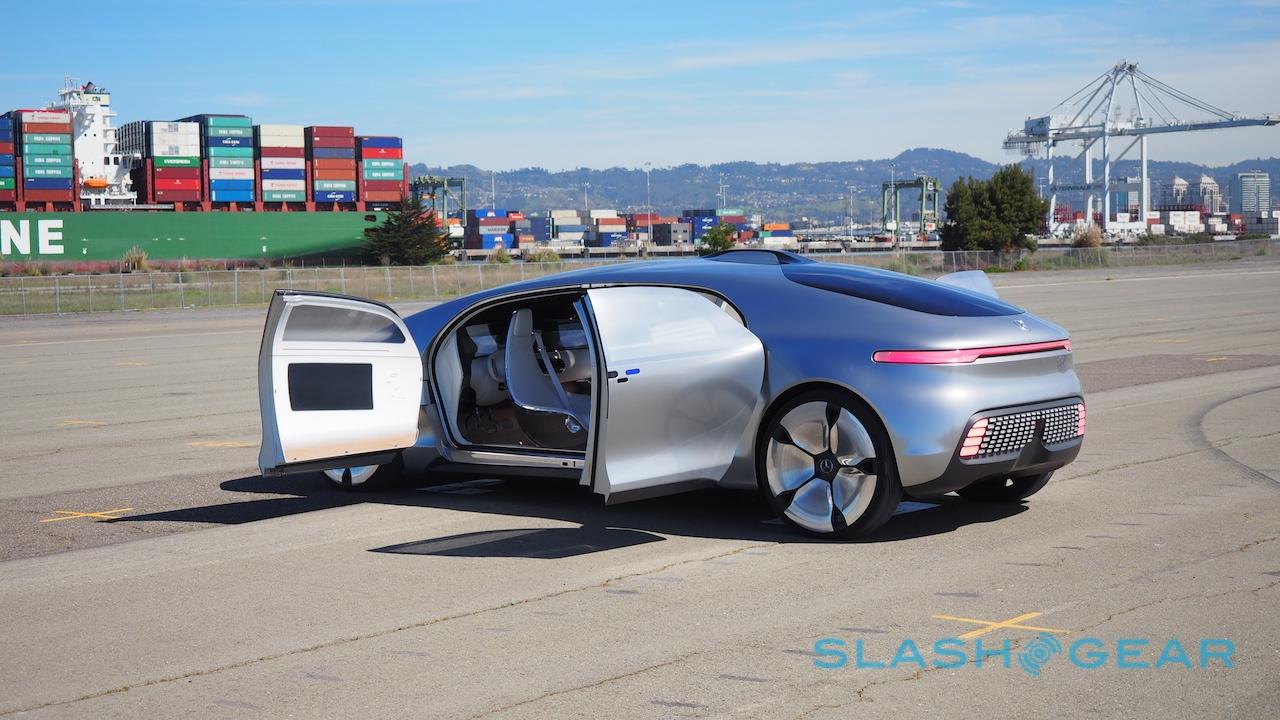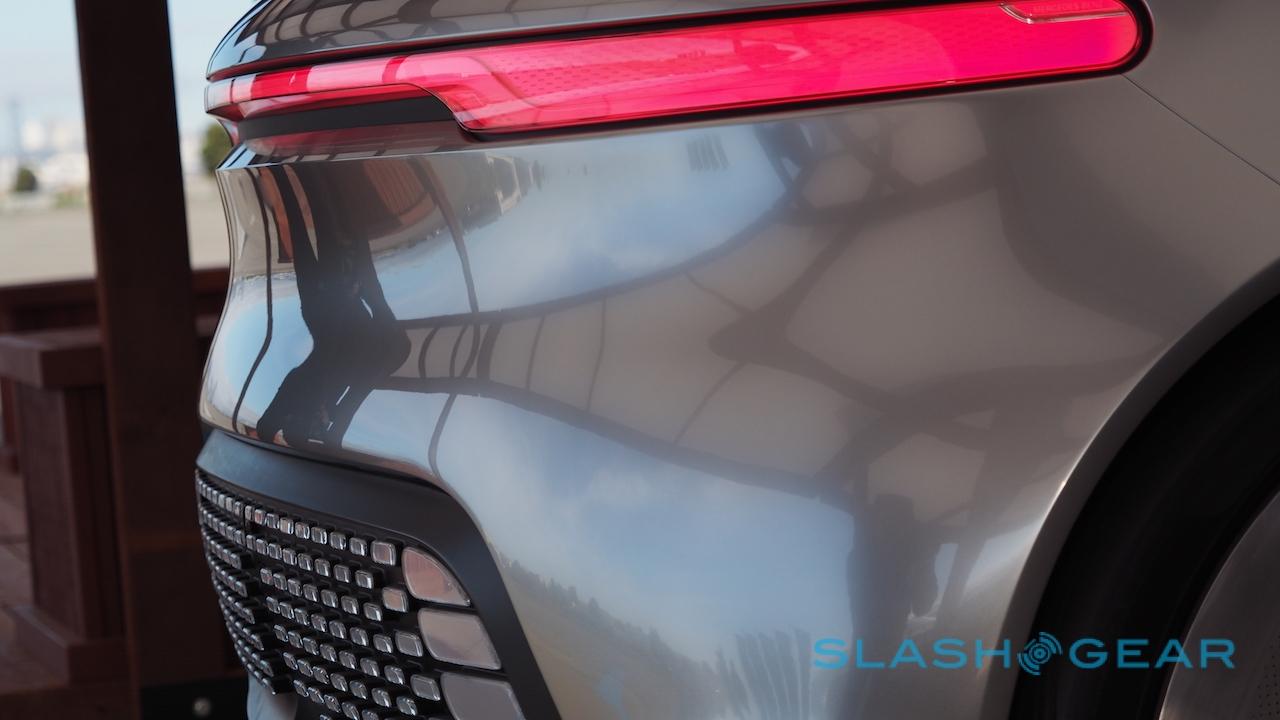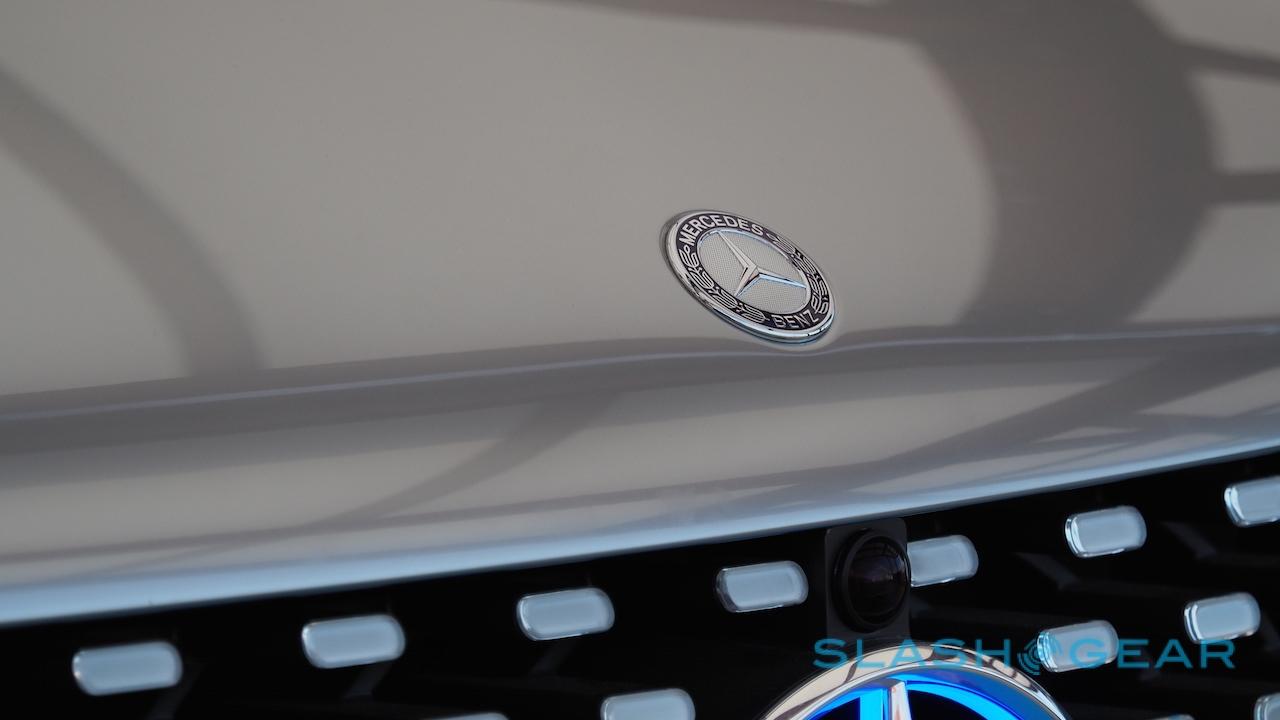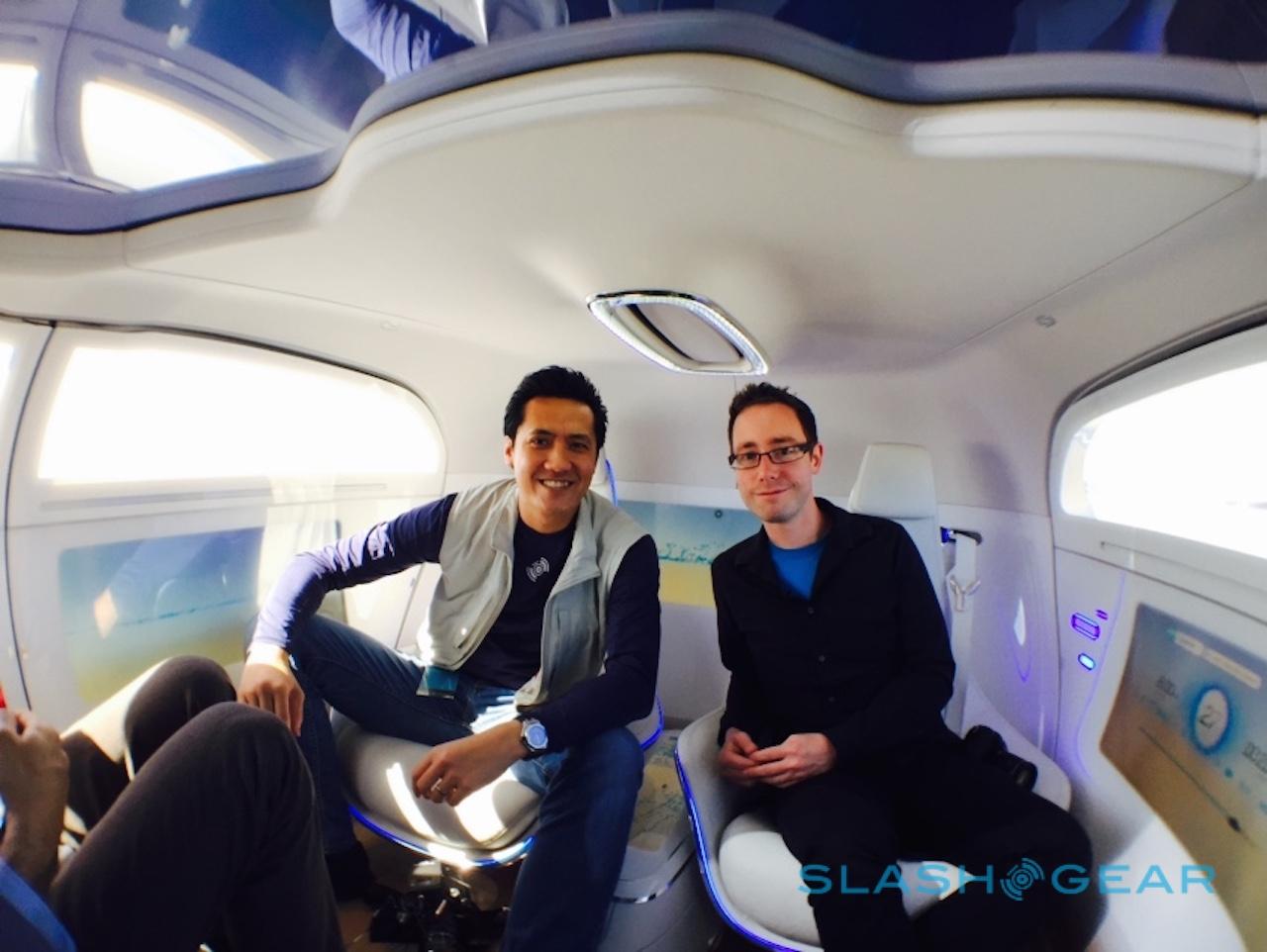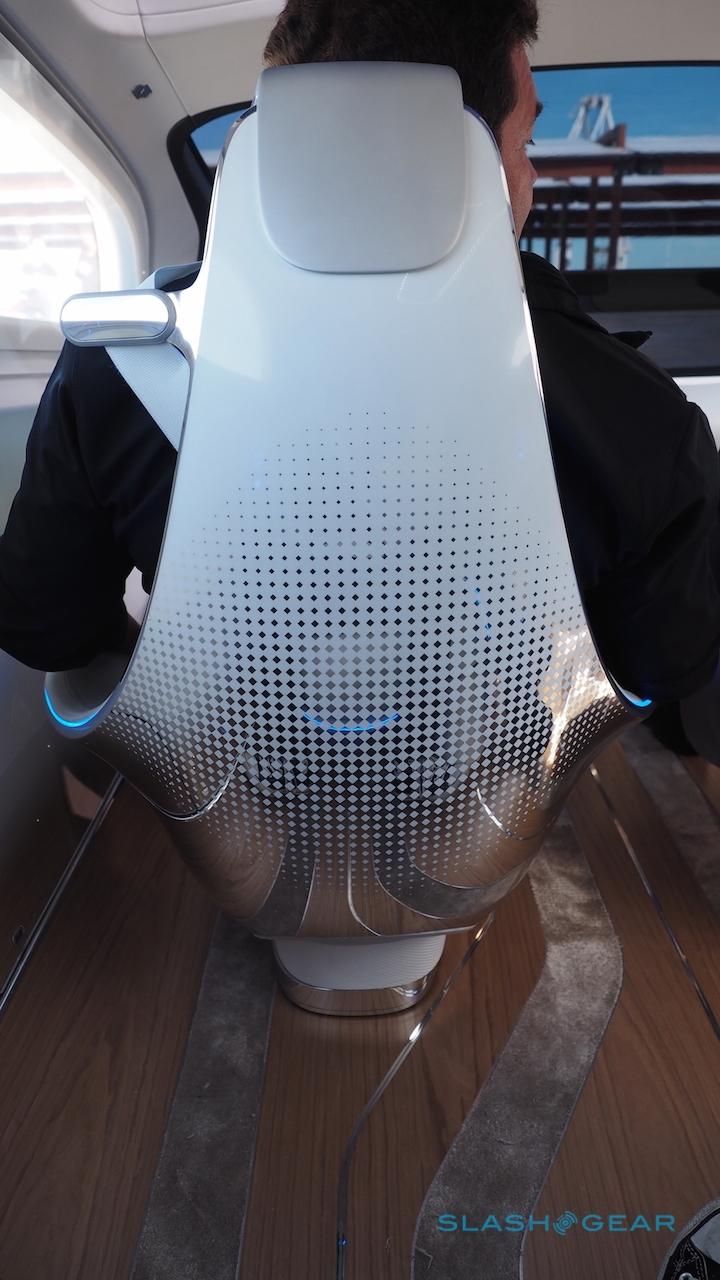I Hitched A Ride In Mercedes' F 015 Self-Driving Car
When you take away the driving from the driver, what do the meat-popsicles inside an autonomous car do while the AI is at the wheel? That's the question Mercedes-Benz has tackled with the F 015 Luxury in Motion, a dramatically different approach to the future of transportation. Starting with the assumption that space will eventually be the biggest luxury, the self-driving concept treats driving much in the same way that a smartphone does the voice call: just one of many features and, as I discovered when I hitched a ride in the space-age pod, no longer the most important.Surprise star of CES 2015, the several months since the F 015's Las Vegas debut have done little to dilute its shock factor. Much larger to the eye than the S Class it actually shares most dimensions with, it's a sweeping arc of silver atop four huge wheels, each pushed out to the far corners to give it an other-worldly stance.

The apparent simplicity actually hides no small amount of detail when your eyes adjust. For instance, the curve of the roofline is steeper at the rear than at the front, giving a sense of forward motion even when the F 015 is stationary. Those 26-inch wheels with their slabbish alloys counterbalance the body's heft and simultaneously allow the waistline to be higher, grounding the car on the road.
Meanwhile, the side glass blends near-imperceptibly into the bodywork; when you get up close, you see Mercedes' designers have used thousands of different sized dots to blur the transition between materials. It's not dissimilar to the patterning you get around the very edges of a windshield in a current car, but writ large across the F 015 outside and in, melding together metal, wood, leather, and glass.
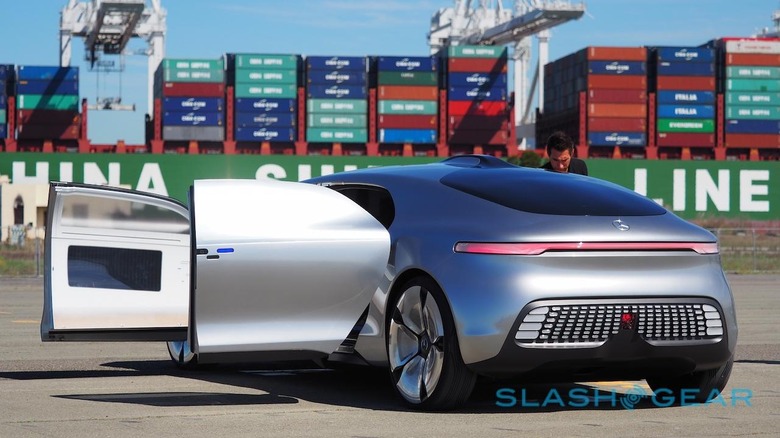
[spotlight]The F 015 may be able to drive autonomously, but not intelligently[/spotlight]
It's an eye-catching design, and polarizing too, but it also hides some impressive technology. Stereo cameras built into the door handles and the grilles give the concept a 360-degree view of the road around it, augmented with radar and ultrasonic sensors. Meanwhile, a few phone's-worth of radios allow it to talk to other vehicles: in theory, it could share driving data and warning of upcoming hazards beyond the reach of the onboard sensors, if only there was another F 015 to talk to.
In fact, right now there's only one drawback. The F 015 may be able to drive autonomously, but it's not currently able to drive intelligently.
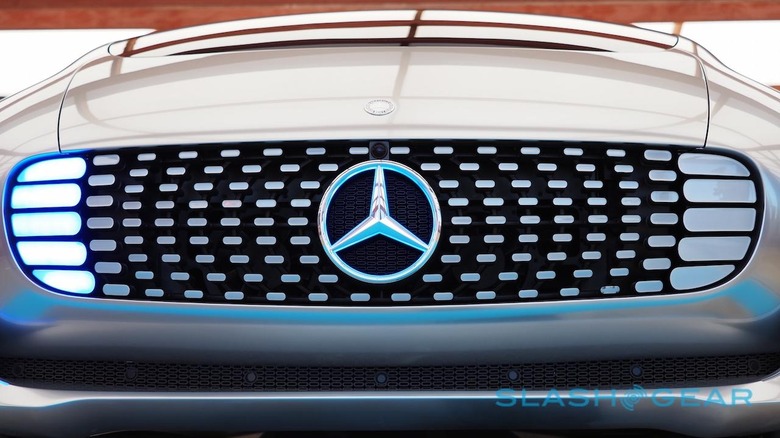
"Because we have to represent the future of the automobile using today's technology, the whole thing takes up a lot of packaging space," Holger Hutzenlaub, Mercedes-Benz's advanced design chief, told me. "We ultimately made the decision to equip the inside of the vehicle, rather than the sensors on the outside to enable autonomous driving."
That means a pre-programmed course rather than the car actually reacting to the twists and turns of a real road. The F 015's carers had cooked up a simulated road course which saw the concept follow a virtual path across the runway, as if it was navigating itself through a town.
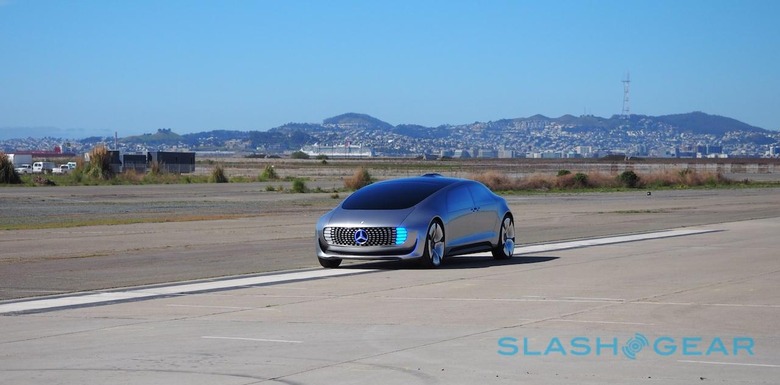
Nonetheless, Hutzenlaub is confident in his team's technology, pointing to the previous self-driving car projects that saw modified Mercedes production models successfully pilot their way across Germany. The gadgetry, he argues, works: it's just all still a little bit too bulky to fit inside one single prototype, especially when it's one as lavish as the Luxury in Motion.
My experience with autonomy began near Mercedes' temporarily-erected garage. Just as in the best car-of-the-future concept videos, you summon the F 015 to your location from a smartphone app. By pre-warning it with details on how many passengers will be hitching a ride, it knows not only how many doors to open, but which seats to partly swivel outwards for easier entry.
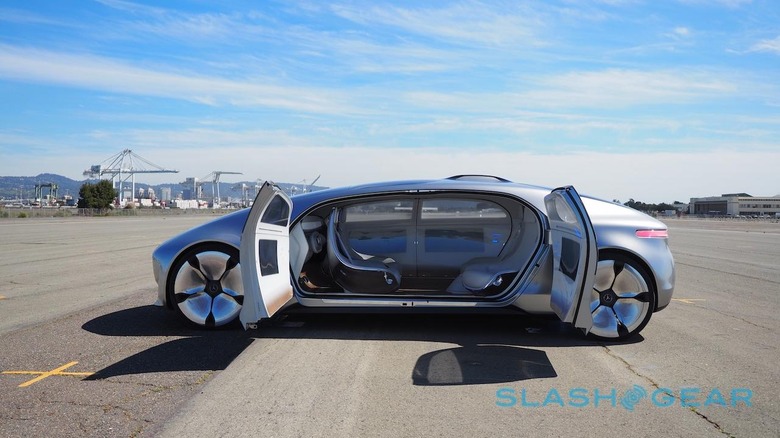
It doesn't entirely seem necessary, mind, given the vast opening on either side of the car. The huge doors – Mercedes calls them saloon doors, since "suicide doors" hasn't been a popular term since the days of horse-drawn carriages – open on specially-designed hinges which, unlike other implementations of the style, allow those at the rear to be operated without necessarily requiring those at the front to be opened first.
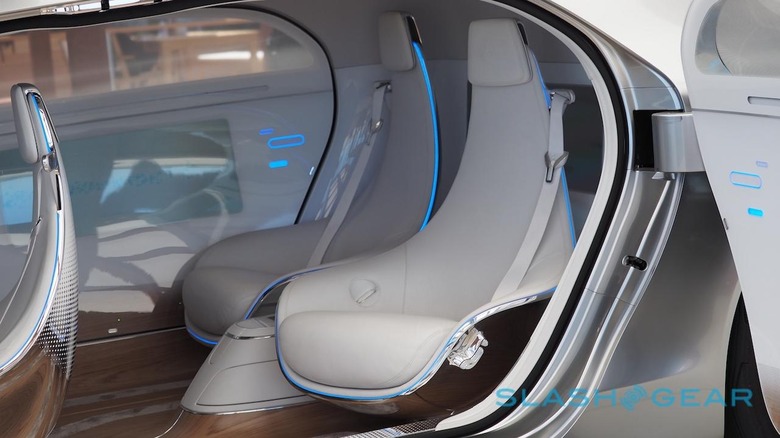
The result is a car you can basically walk through, the space is so large once its been cracked open like a particularly shiny, expensive egg. The seats are more akin to designer lounge furniture than what you'd usually find in a car, beautifully polished cups of metal and textured leather that sit unexpectedly upright thanks to the combination of high ceiling and low floor.
Press – and hold – the "close" button up above the door and the space egg reseals itself and you're ready to go autonomous. The steering wheel – a stubby little leather and aluminum number reminiscent of a gamer's peripheral – was retracted into its stowed position in the dashboard, the "driver's seat" rotated to face backward to illustrate the F 015's disdain for traditional human roles.
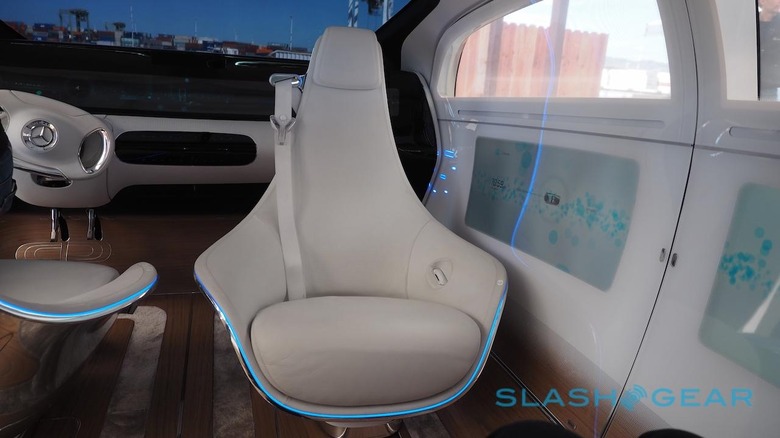
Instead, you reach out to one of the huge 4K displays built into the doors and tap the "GO" icon. It took two taps on our test run, but after a moment's pause the car suddenly whirred forward and we were away.
[spotlight]Mercedes' powertrain is as unusual as the F 015's design is odd[/spotlight]
It's definitely a whir and not a roar. Mercedes-Benz opted for as unusual a powertrain as the F 015's design is odd, and so a hydrogen fuel-cell is combined with a plug-in EV system. In an ideal world, you'll get around 124 miles of all-electric driving from a single charge, and probably seldom have to turn to the roughly 560 mile fuel-cell range, which effectively operates as a mobile generator. The electric motors fizz with a not-unpleasant but certainly distinctive whine.
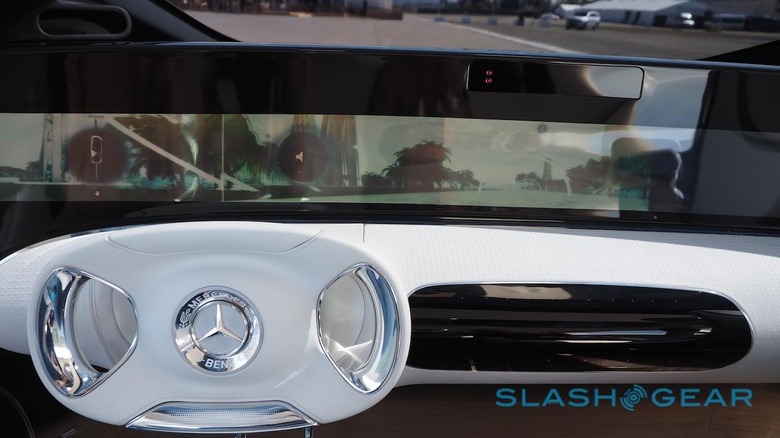
What proved particularly astonishing is quite how content I was to leave everything to the computer. Sure, you can tap into the door display and drag the AI's personality to somewhere on a scale between "relaxed" and "dynamic" – Mercedes rather primly calls it setting the "Conducting" of the F 015, as though it's at some Downton Abbey finishing school – which basically tweaks the aggressiveness between suitable-for-great-grandma and perilously-late-for-court-hearing, but otherwise you're expected to sit back and do other things.
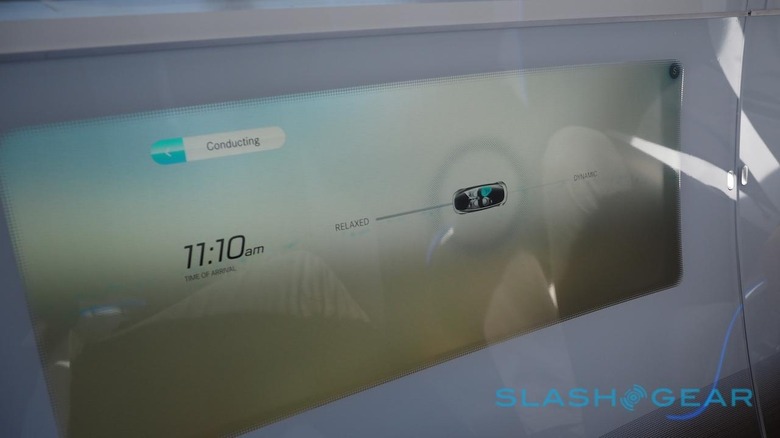
That might include making conversation, chatting with the other people occupying your pod, but before you get any new-age ideas about autonomous cars restoring the halcyon pre-digital days (or even just eye-contact), there's still plenty of digital to distract you.
The F 015 can plot points-of-interest along your route, for instance, or even your friends' locations, so that you can tap in a quick detour. It'll even stream video from another car – in theory, anyway, since F 015 concepts aren't exactly commonplace – so that you can get a 360-degree preview of what's happening up ahead. You can use the same screens to make calls or video calls, or send messages (again, in theory, since actually tapping the contact options just triggered a prerecorded demo of what the UI might look like).
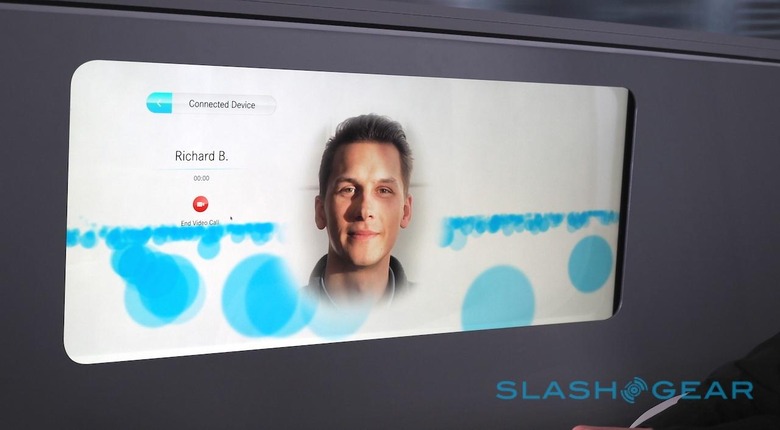
In fact, most of the time I found I was looking at the screens not at the windows above them, where the empty expanse of runway spooled past as the Mercedes' smarts played out. The F 015 team is hardly surprised by that: one of the concept's party tricks is to play a 360-degree virtual environment on all the displays, more interesting than what's actually going on outside.
That could be an imaginary, digitally-generated route or even a pre-recording of a real drive somewhere else in the world. Either way, the movement of the car is mapped to what's happening on-screen: as you physically turn a corner in the real-world you simultaneously make an equal turn in the virtual world, so avoiding any sickness from a mismatch between what you're seeing and what your body is reporting.
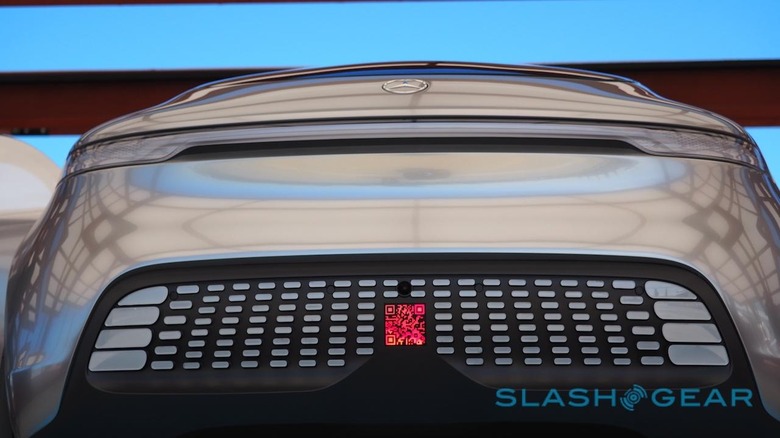
[spotlight]To be honest, most of the time you're not on the right road[/spotlight]
Now, I love driving, don't get me wrong. On the right road, in the right car, there's little so rewarding. Yet still, a lot of the arguments Mercedes-Benz makes in favor of autonomous vehicles make a lot of sense to me.
Because, to be honest, most of the time you're not on the right road, or in the most rewarding driver's car. Most of the time you're on a dull freeway, or stuck in traffic, or simply plowing the same old route to work, or school, or the grocery store. Even if that route takes you through some world-class scenery, you only get to glance at it because you're meant to be paying attention at the wheel.
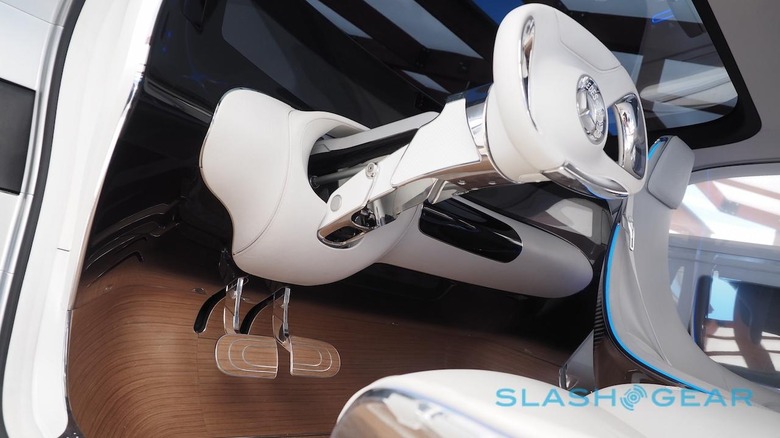
Far better, surely, to have a car that can take on the drudge-driving and then hand over the reins on the few occasions you actively want to be in control. Maybe your vehicle of choice wouldn't be a luxo-barge like the F 015 then, but there's no reason you couldn't have an autonomous sports coupé that handled getting you to the twisty stuff on its own.
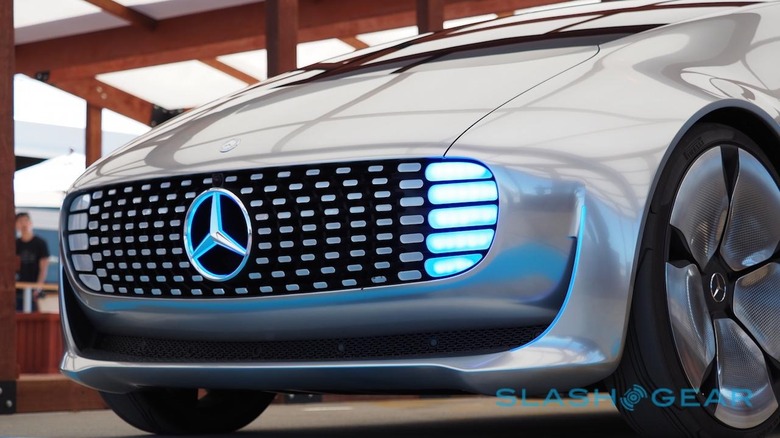
Of course, just because the passengers inside the F 015 may trust the computers, that doesn't mean those around it will necessarily be reassured in the same way. Mercedes-Benz calls it "social acceptance" and it's in part the reason for the expansive LED light bars on the front and back of the car.
When the F 015 spots a pedestrian, for instance, it can not only welcome them to pass by projecting a laser crosswalk on the street ahead, but echo their movement with tracking lights. That's replicated at the rear, so that cars behind the F 015 know that it's pausing to allow someone to cross rather than simply because the concept is taking a nap.
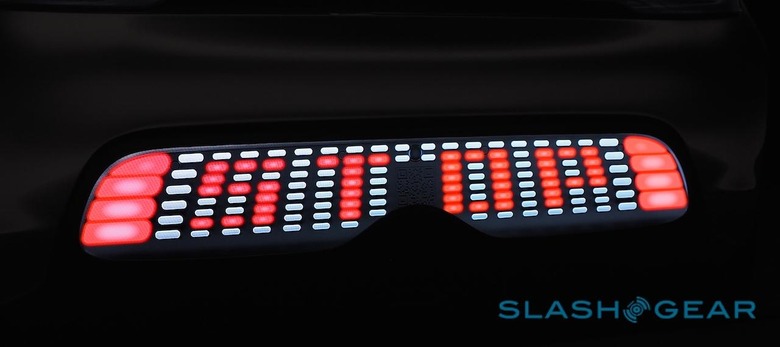
If the fancy laser-projection system was working, I couldn't really see it in the bright Californian sun. However, the pedestrian-spotting and movement tracking certainly works: when I approached the front of the car, the grille lit up to show me I'd been seen, and then a bubble of light followed me across (even when I doubled-back to try to trick it). Alternatively, you can wave the F 015 on past, with a gracious "Thank you" murmured from hidden speakers in response.
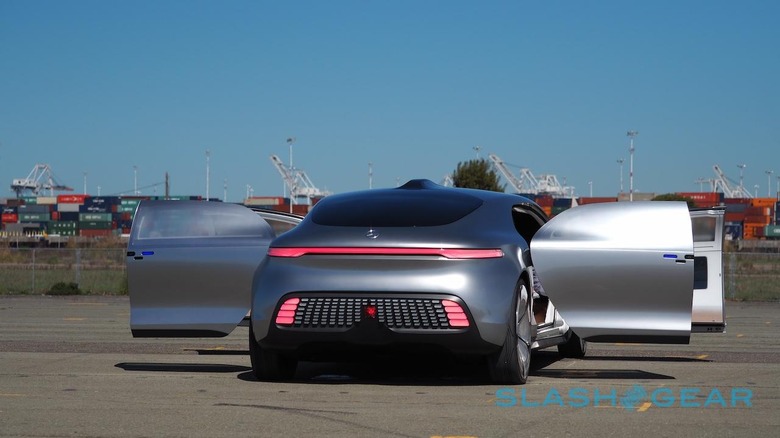
Stepping out of the F 015 as it pulled into its temporary garage I was struck by how – even in the world of concept cars – this particular prototype spans a wide gamut. Most of the visual glitz is theoretical, what Hutzenlaub's team thinks you might be doing in the self-driving car of the day after tomorrow. Will there really be enough scenic roads and cities digitally captured to map onto your virtual windows, or people to stream video to you from a few blocks ahead?
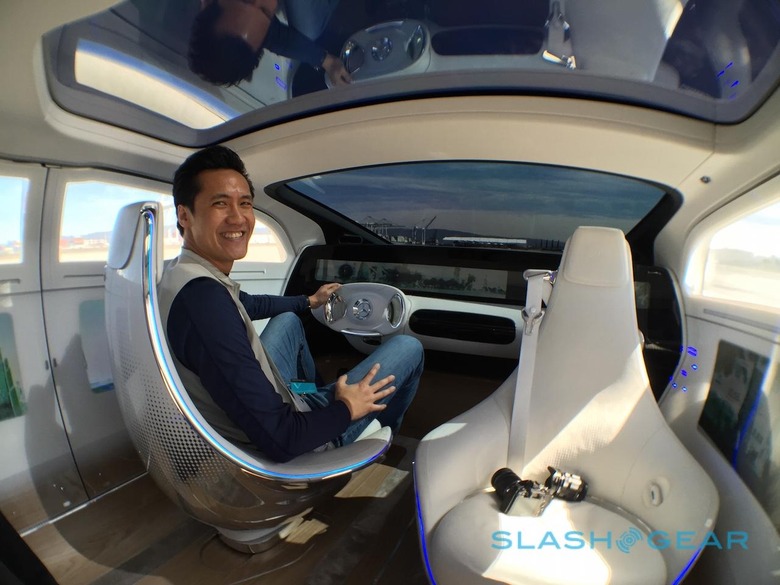
In perhaps bizarre contrast, the actual autonomous technology feels far more practical. If the question is whether people will accept a robot driver, then my own near-immediate comfort levels suggest the uncertainty around the self-driving car may be more quickly tempered than cynics predict (admittedly the unusually luxurious cabin might have helped distract me, too).
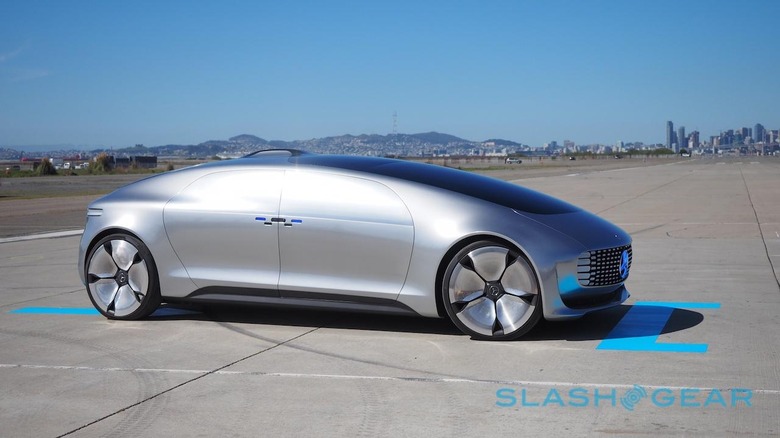
[spotlight]It's difficult to get past the F 015's geeky features[/spotlight]
I had scoffed a little when, at the start of the day, Hutzenlaub told me "we are convinced this research vehicle shows a highly realistic image of future mobility." It's certainly difficult to get past the F 015 Luxury in Motion's outlandish aesthetic and its checklist of geeky features; seldom do you come across a real car that looks more striking than most CGI-created movie concepts.
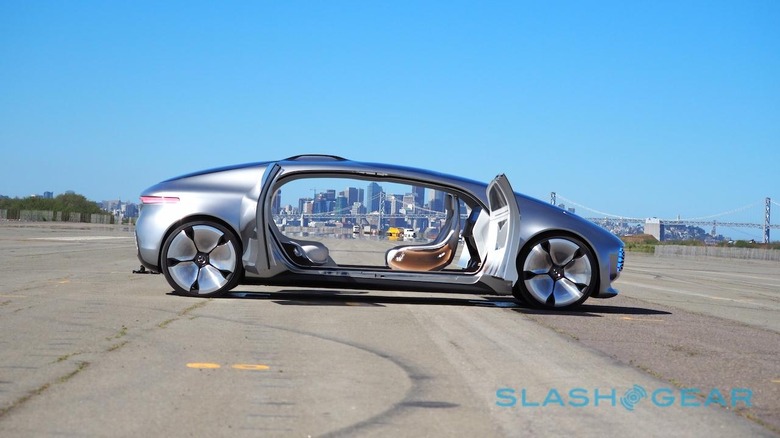
Yet Mercedes-Benz has actually made a sheep in wolf's clothing. A vision of the future so outlandish in the aspirations of its futurology that the inevitability of its core abilities – removing the driver from the mundane – goes unquestioned. The technology still needs work, and the regulatory environment it must navigate is even further behind, but make no mistake: the self-driving car is coming. It may not look like this vast, silver bubble from outer-space, but it'll certainly be following in its tire tracks.
Still to come: behind the scenes in the design and technology Mercedes-Benz used in the F 015 concept.

